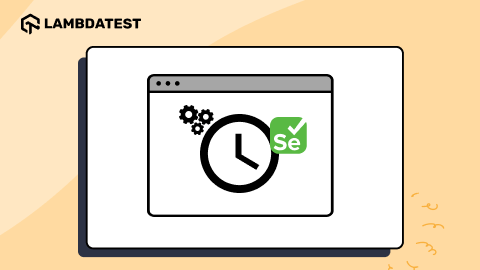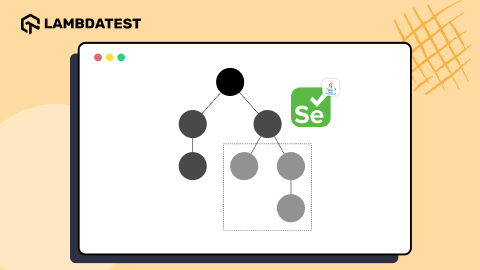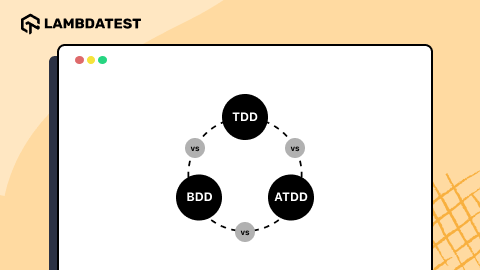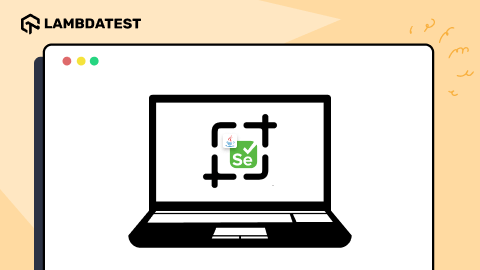Top 34 Codeless Testing Tools For 2024
Shakura Banu
Posted On: February 29, 2024
![]() 337090 Views
337090 Views
![]() 37 Min Read
37 Min Read
With technological advancement and growth and the arrival of DevOps and Agile, the software testing industry is witnessing numerous changes. Software testing has traversed a long path from manual testing to record-and-playback sophisticated testing tools, then to test automation, and now to codeless automation testing.
Automation testing tools without coding enable efficient software testing through a user-friendly interface. These tools offer codeless test creation, making them ideal for non-technical users aiming to automate testing processes.
Codeless testing tools have become increasingly significant in recent years as they allow software companies to perform automated testing without writing code. These codeless testing tools use graphical user interfaces (GUIs) and UI automated testing tools to enable users to create automated tests through drag-and-drop functionality, eliminating the need for traditional coding skills.
They have evolved to a point where they are more sophisticated and can handle complex testing scenarios. To increase their precision and effectiveness, they can incorporate AI and ML algorithms and various programming languages and technologies. Software companies can benefit from codeless testing tools because they can cut testing time and costs, raise software quality, and improve user experience.
Codeless testing tools enable businesses to adopt a shift left testing strategy, where testing is done earlier in the development cycle, lowering the risk of bugs and issues arising later in the process. By enhancing their testing capabilities and enabling them to deliver high-quality software more quickly and effectively, the use of codeless testing tools can give software companies a competitive edge.
This blog is about taking you through the top 34 codeless testing tools you should look forward to in 2024. However, before jumping to that, let’s understand codeless automated testing and its benefits.
Without ado, let’s dive deep.
TABLE OF CONTENTS
What is Codeless Automated Testing?
Codeless automated testing means performing automation testing without using any script. Writing automated scripts could be challenging for QA engineers as the code required to be written in every suitable programming language is arduous and time-consuming. Automation testing tools without coding, can minimize the testing time over repetitive test cases without any coding efforts.
Many codeless testing tools are available in the market, encompassing a set of built-in features without any complicated coding. Some of the significant features include:
- Drag and Drop interface.
- Record and Playback.
- Integrations of ML or AI technologies.
- Lower maintenance.
Benefits of Codeless Automated Testing
There are many reasons why you must consider implementing codeless test automation into the software testing process.
- It reduces the necessity for writing code, saving a great deal of time and work. With the use of drag-and-drop interfaces and pre-built components, testers may rapidly and easily develop tests.
- Codeless testing uses fewer resources than conventional automation techniques, which lowers the cost of test automation.
- It facilitates easy testing, with the team spending little effort on automation.
- Codeless automation test tools increase test coverage.
- With codeless automation, even the complicated test scripts are simple to change and manage.
Code-Based Vs. Codeless Automated Testing
Here are the differences between code-based vs codeless automated testing.
| Parameter | Code-Based Testing | Codeless Testing |
|---|---|---|
| Test Creation | Tests are created using code by developers or testers. | Tests are created using drag-and-drop, visual workflows, or record and replay. |
| Programming Knowledge Required | High | Low to moderate |
| Test Maintenance | Code changes may require test updates. | No coding knowledge is required for test maintenance. |
| Test Execution | Automated using scripts written in the programming language. | Automated using a graphical interface, reducing the amount of coding required to execute tests. |
| Test Coverage | Higher coverage as tests can be highly customized. | Lower coverage as tests are created using pre-built modules and require less customization. |
| Time to Create Tests | Longer | Shorter |
| Tool Complexity | Higher | Lower |
| Learning Curve | Steep | Shallower |
| Integration with Other Tools | Integration may require more coding. | Integrates easily with other tools, including CI/CD, test management, and other software development tools. |
Top 34 Codeless Testing Tools for Faster QA
Let’s explore the most popular codeless testing tools that help QA specialists to go on board for the Codeless Test Automation journey!
1. Katalon Studio
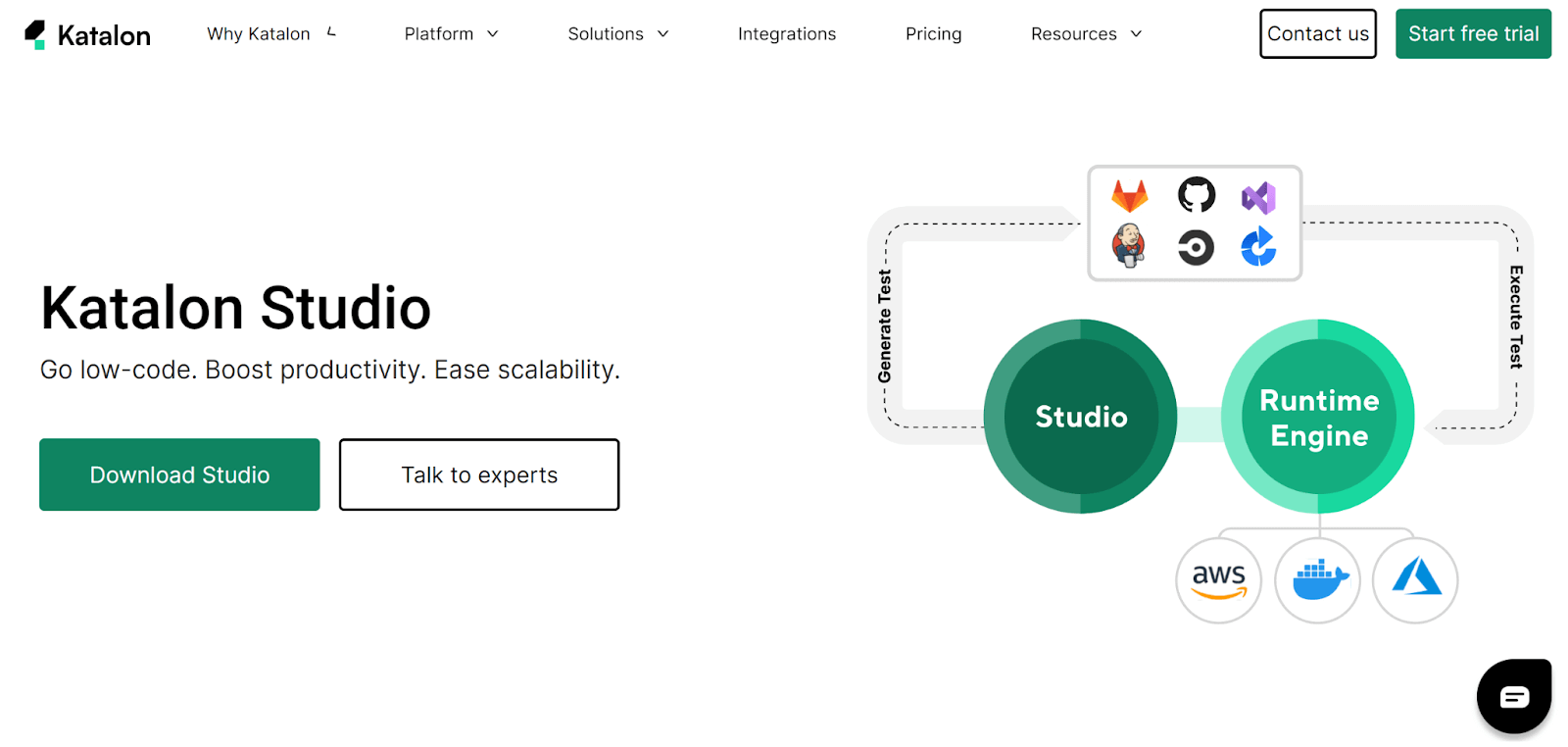
Katalon Studio is ranked among one of the top codeless testing tools and a popular choice for its extensive range of test abilities across Desktop, Mobile, Web, APIs, and applications. Its unique features are simple-to-use and best for experienced and beginner QA engineers. Katalon comes with an accessible interface for test experts and business users. The drag-and-drop commands, record, and playback traits make it a perfect codeless automated testing tool. QA engineers can easily import external test libraries and allow the tool to be implemented, avoiding building a framework from scratch.
Core Features:
- Requires minimal programming skills.
- Supports API, web, desktop, and mobile automation testing.
- Comes with in-built test-case libraries, project templates, object repositories, and keywords.
- Supports native plugins for the famous Continuous Integration tools.
- Capable of locating modifications in the object and creating tests consequently.
- Powerful recording and playback feature.
- Comprehensive and robust reporting capacities.
- Supports in-built integrations like Issue Management, Notifications & Communication, and Test Management.
 Note
NoteIntegrate Katalon with LambdaTest to run codeless-based tests at scale across 3000+ browsers and mobile devices. Try LambdaTest Today!
2. LEAPWORK
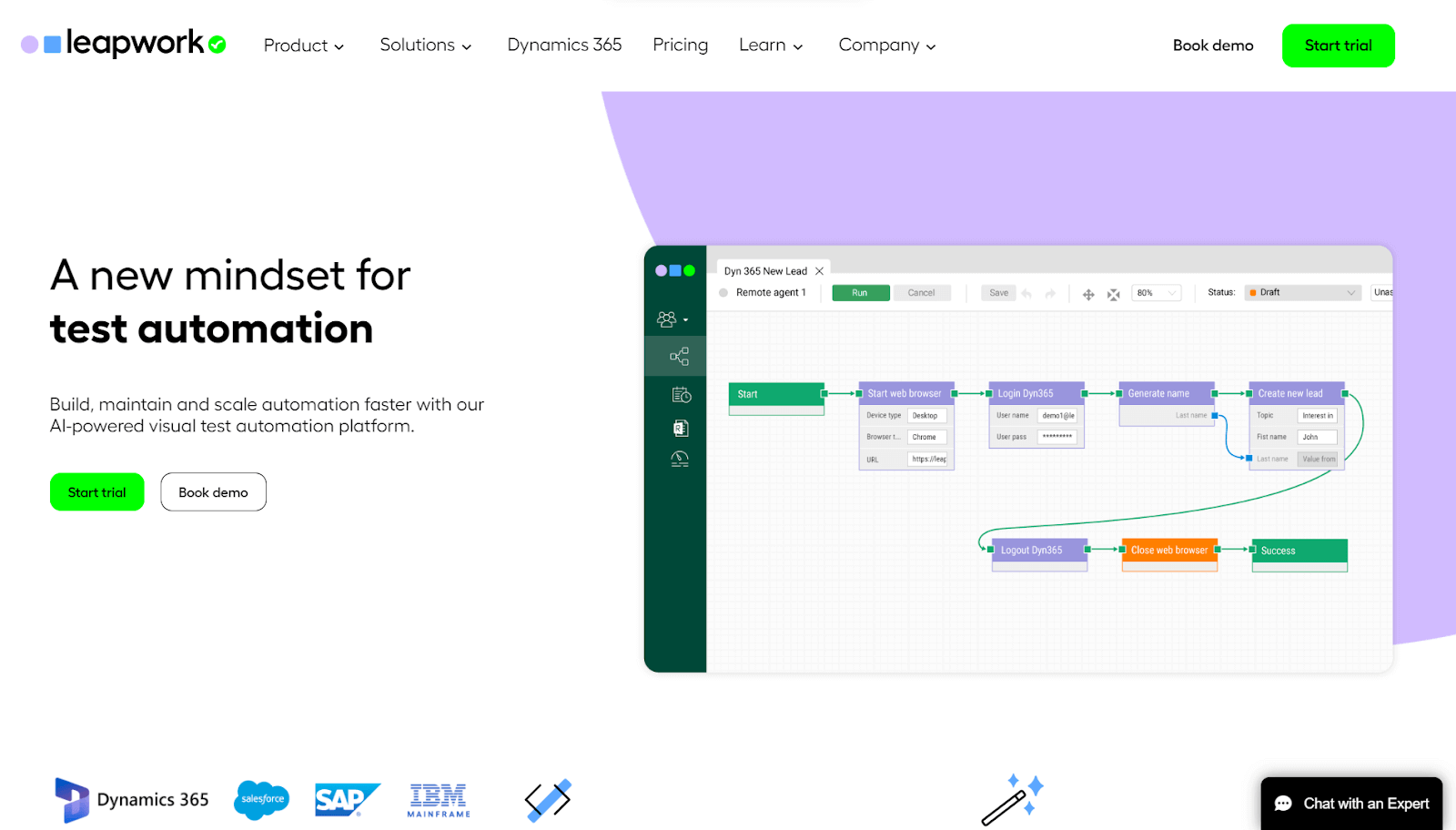
LEAPWORK is an advanced cloud-based, codeless automation testing tool that supports the testing of many forms of apps, including Windows and Web. With LEAPWORK, you can enable your agile project team to speed up the development and implementation of the QA automated testing procedure. Designed for both Desktop and Web apps, this codeless testing tool comes with predefined building blocks and default libraries for automation, aiding QA teams to improve productivity and save time.
Core Features:
- Capability to reuse automated flows across distinct test cases.
- Visualize flow builder through drag & drop building blocks.
- Codeless capacities to shorten the learning curve for QA teams.
- Supports cross-browser tests and parallel runs.
- Easy integration with the current DevOps toolset.
- Smart recorder for capturing test steps & running them automatically.
- Capable of managing huge volumes of data and supporting various data sources.
Check how to overcome test automation challenges by integrating LEAPWORK with LambdaTest.
3. Ranorex Studio
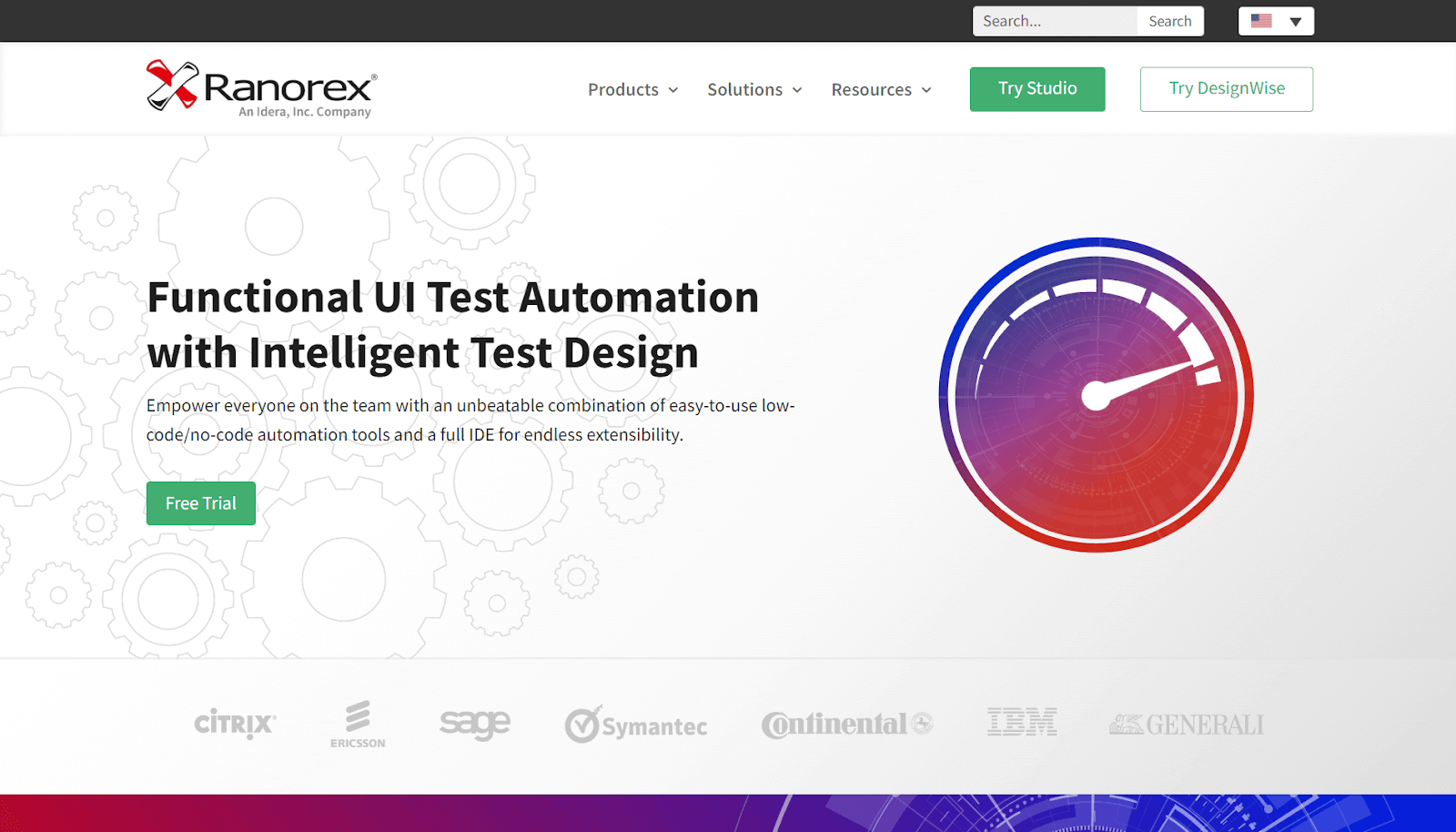
Ranorex Studio is an all-purpose and among the most popular codeless testing tools for professionals and beginners. This is a perfect codeless automation testing tool to automate mobile, web-based, and desktop apps without needing a scripting language to automate the app. Ranorex mainly uses standard programming languages like C# & VB.NET.
Using this codeless testing tool, you can use the drag-&-drop User Interface objects, capture-&-replay tool, and code modules to automate regression testing. Ranorex also allows testers to generate modular automation scripts that are maintainable and effective, irrespective of programming expertise. The Ranorex core API is incorporated with Selenium WebDriver; hence one can easily deliver cross browser testing on a Selenium Grid.
Core Features:
- Cross-platform tests, counting mobile, web, and desktop environments.
- Records & replays the user’s communication to generate reusable scripts that can be modified with its action editor.
- Test scripts can be run between the commands of a specific test case.
- RanoreXPath technology recognizes the UI components of the app.
- The exclusive spy engine tracks descriptions of each User Interface component on the screen.
- Compare and confirm images with an accepted image that can be straight uploaded to the software.
- Integrations with Azure DevOps, JIRA, Bugzilla, TestRail, Git, Jenkins, and more, so one could easily build an entire automated tests toolchain.
4. TestCraft
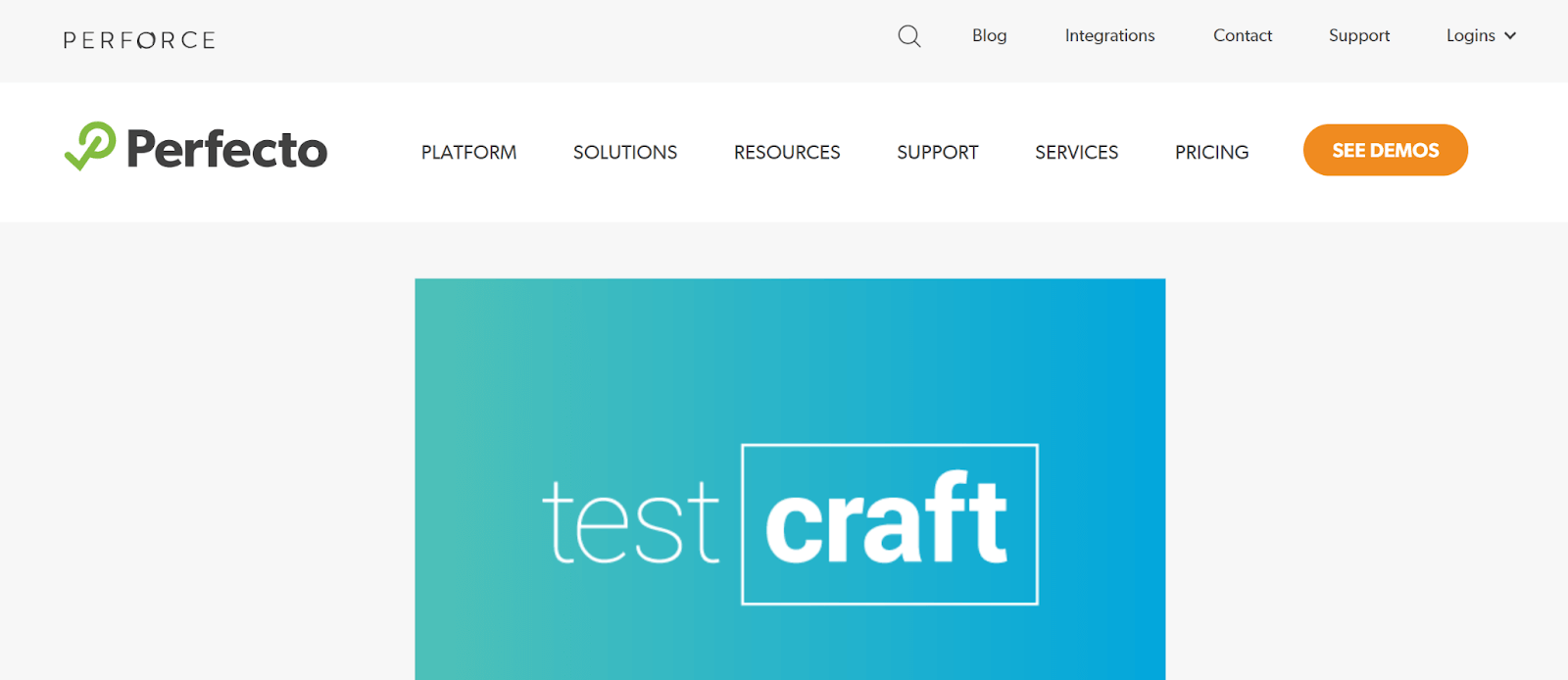
TestCraft is one of the most incredible codeless testing tools, which was introduced as an E2E (end-to-end) test automation platform for continuous testing and regression testing. Similar to other codeless testing tools with the special feature of Record and Playback, this codeless automation testing tool offers a test script with inputs coded beforehand that must be modified afterward.
Core Features:
- Provides agility by generating test scenarios even before the app gets ready.
- Support multiple data sets and parallel implementation.
- At once, binding to adjust to most app changes.
- Flows and Elements can be reusable across scenarios.
- Smart analysis and reports on each test action.
5. Selenium IDE
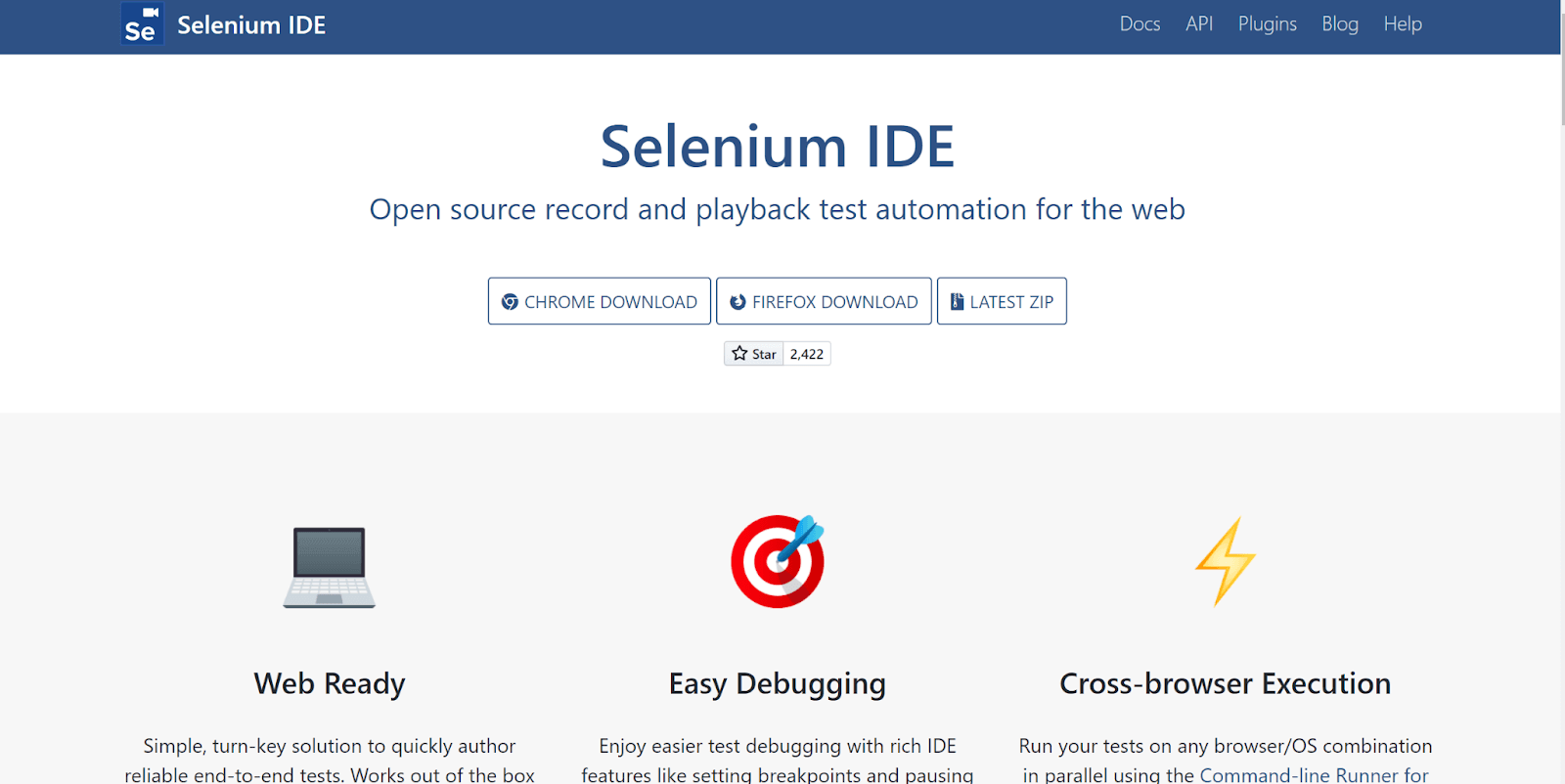
Selenium IDE is one of the top codeless testing tools that allows you to automate web applications with everything that Selenium offers without needing to write codes. It uses the record & playback feature to support codeless automated testing. Selenium IDE can be extended with plugins. They bring in new commands to IDE or incorporate them with other services. It is a simple-to-use codeless automated testing tool that gives instantaneous feedback and allows you to run testing on any OS and Browser combination using the Selenium IDE command-line runner.
Core Features:
- Allows you to run a particular test or an entire test suite that counts a group of tests.
- Setting breakpoints & pausing on exemptions makes it effortless for debugging testing from the IDE itself.
- Used for browser automation testing as cross-browser testing can be implemented using the Selenium SIDE runner.
- Supports several commands used to create loops, insert waits, rise asserts, and more.
- It has a wide-ranging command set that allows a control flow structure. Commands like if else, if, etc. assist in executing conditional testing from the IDE.
- The run command allows testers to reuse a specific test case inside another test suite.
- Supports a group of Selenese commands (or series of Se commands) that allows you to execute tests.
- Trouble-free comparison and modification of test cases – test scripts generated through IDE are stored as JSON files that simplify comparing, changing, and examining tests.
6. CloudQA
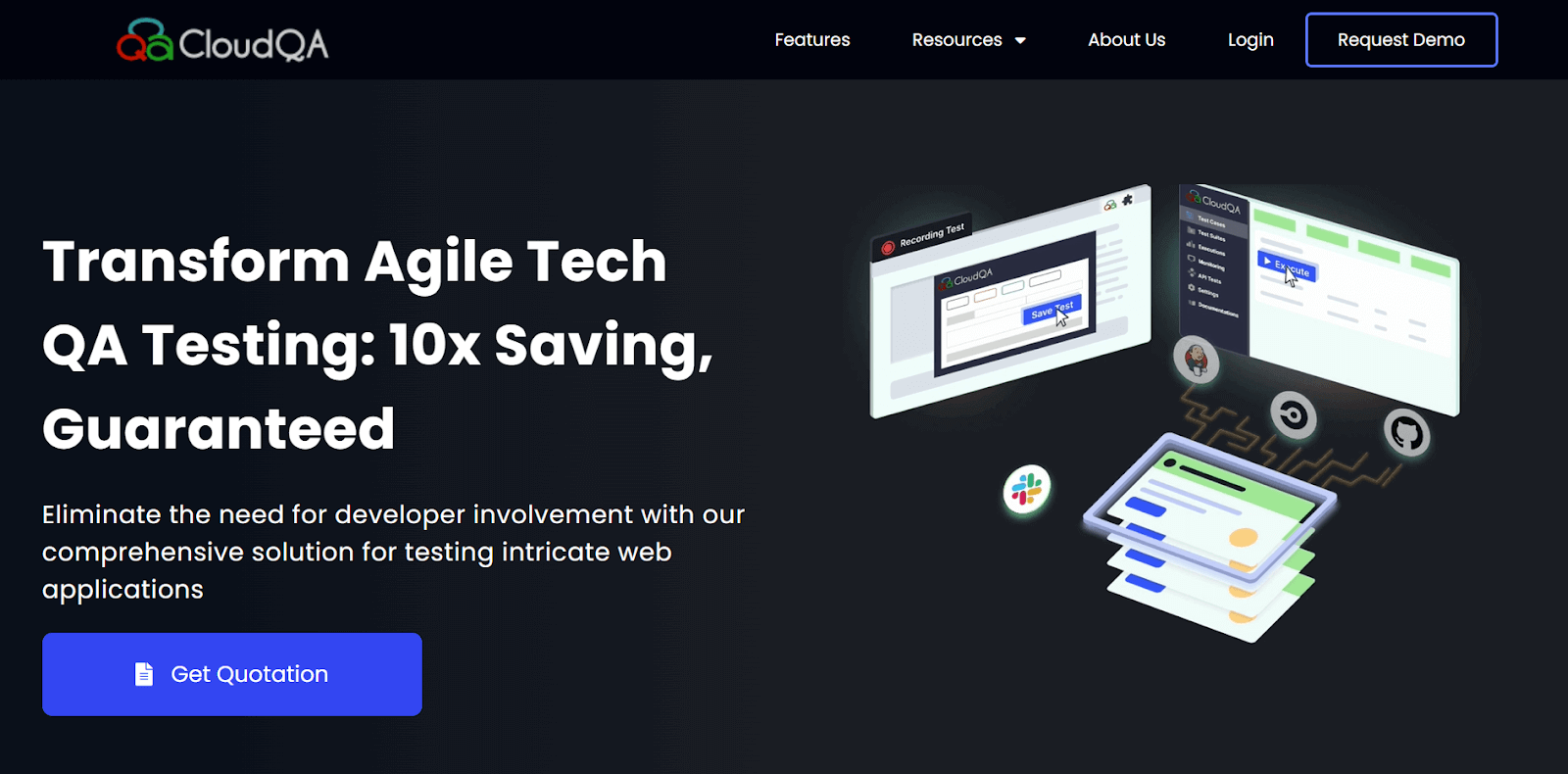
CloudQA is a robust integrated cloud-based automated testing platform launched to build, manage, and implement tests against several browsers separately and in parallel. CloudQA is not just a Record and Playback tool; it offers its users an integrated report tool for rapidly generating and scheduling regression test suites.
This codeless automation testing tool gives you the same power as Selenium, with no advanced programming expertise required. Recorded testing is put into manageable modules and visible incomprehensible forms. Even the same tests can be reused for load tests, regression tests, and synthetic monitoring.
Core Features:
- Higher reusability for synthetic examining without changing any codes.
- Scrutinize multiple data sets over varied browsers (e.g., Mozilla Firefox, Internet Explorer, Chrome).
- Huge and smooth capacity to maintain thousands of tests.
- Smart Record & Playback tests with screenshots after each step.
- Schedule and execute testing unattended.
- Support for data-driven tests.
- Bugs can be managed through 3rd-party integrations like Slack, Asana, GitHub, JIRA, etc.
7. ACCELQ
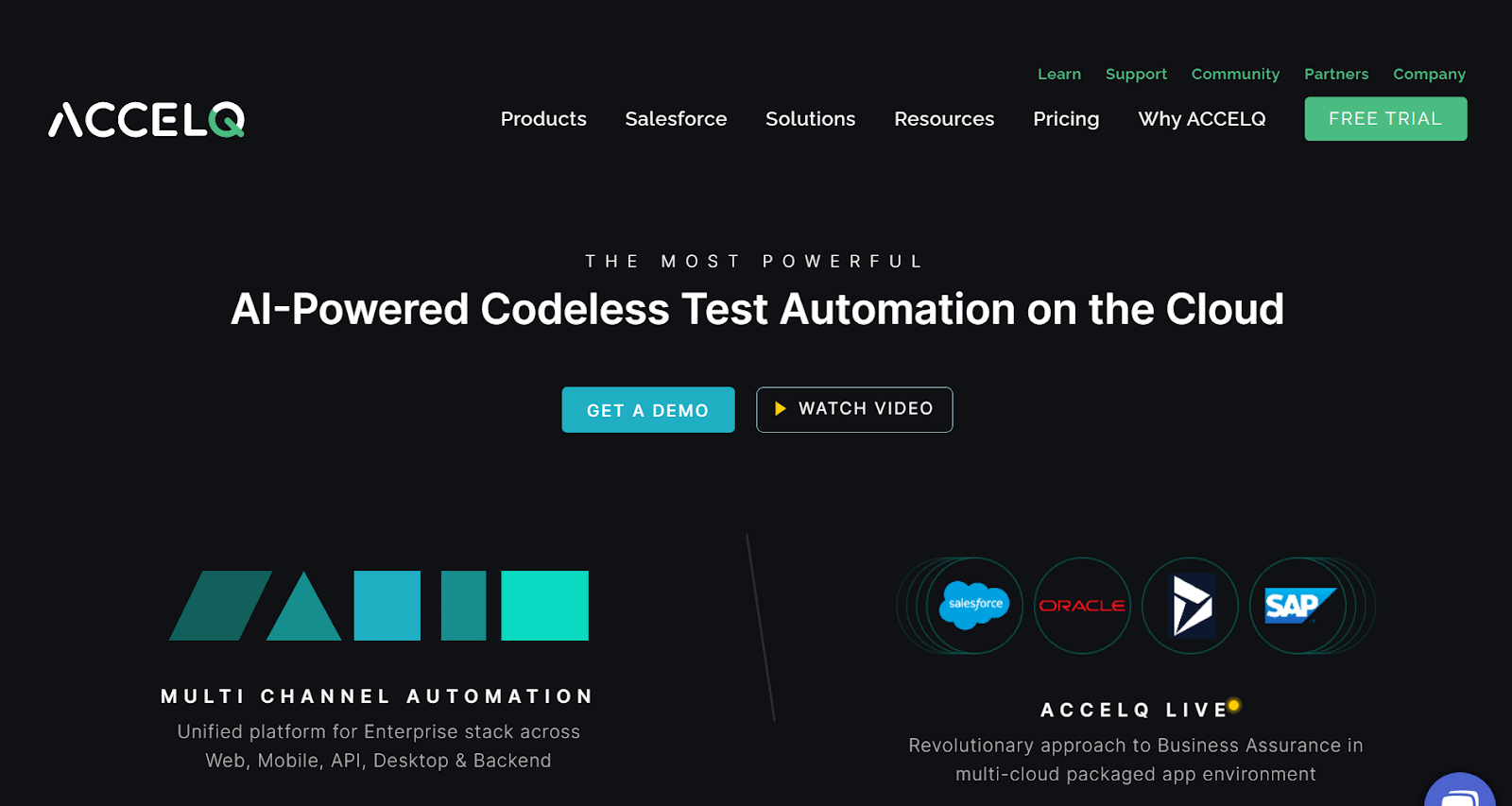
It is an Artificial Intelligence-powered codeless automated testing tool that fulfils all the criteria of being a perfect codeless selenium automation tool. ACCELQ can automate desktops, web, mainframes, and other apps with minimal effort and time, speeding up the test cycle. Unlike other codeless testing tools, its self-healing traits and natural English coding make it very different from others in the competition.
With an easy and fast-to-develop user interface, it can be smoothly incorporated with existing and famous DevOps and quality toolchains quite smoothly. Traits like Extendible & Open Source Alignment, Natural Language Programming, Automated Test Generation, and Intelligent Element Explorer have made it an instant hit among companies.
Core Features:
- Highly safe and scalable for enterprise practice.
- Capacity to automate User Interface and API with ease and in a similar flow.
- Creates app blueprint for great visual test designs.
- Speedy development and least maintenance with Embedded Frameworks.
- Projecting and Path Analysis traits for generating test scenarios.
- Maximize test coverage through Data flows and Model UI.
- Continuous integration-ready and allows in-sprint automation.
8. Sikuli

Sikuli uses image recognition techniques to run automated Graphical User Interface tests to identify and manage Graphical UI components. It can also be useful when working with the Selenium WebDriver, particularly when automating Java applets and Flash objects, while IDE scripts increase their capabilities.
In contrast to other codeless testing tools, a visible app Graphical User Interface is needed during run-time. Therefore, Sikuli can’t execute and maintain several scripts concurrently when the Graphical User Interface changes several times.
Core Features:
- Supports several platforms like Linux, Mac, and Windows.
- Record images at the Pixel level for User Interface verification.
- Automate tests on distinct devices and emulators.
- Incorporate with Se (Selenium) for automating desktop apps.
- Record & Playback various actions such as mouse actions and drag & drop.
9. Mabl
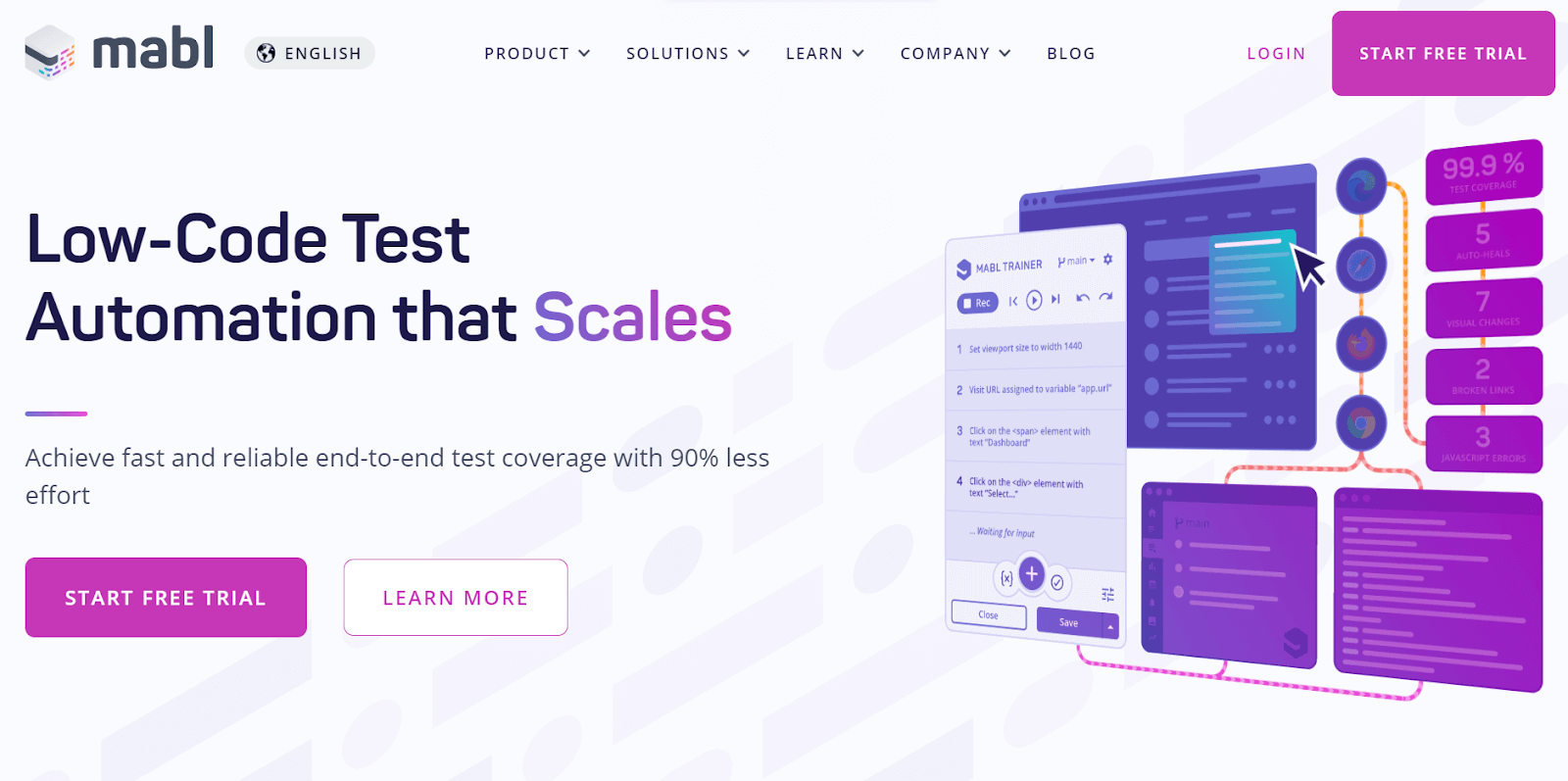
Mabl is one of the intelligent codeless testing tools built for CI/CD. It integrates automated E2E tests well into the complete Software Development Life Cycle (SDLC) due to extensive web browser automation coverage like Selenium WebDriver, Selenium IDE, and other automation testing tools.
By switching to Mabl, users can perform non-SDETS robust testing across all prominent browsers in parallel. This helps to eliminate the barrier of visual design, user experience tests, and performance tests. This eventually reduces the physical effort, hosted infrastructure, plus test case maintenance for automation testing by managing it all in the cloud. Here’s a quick comparison of LambdaTest and Mabl for your consideration.
Core Features:
- LambdaTest is a high performing Mabl alternative that has more integrations, easy subscription management and better browser support
- The new and advanced User Interface and design approach.
- Mabl Trainer browser plugins permit functional testing setup against apps in minutes.
- Change test output to several issues (like BigQuery, JIRA).
- Actionable insights can be exported via BigQuery, JIRA, and emails.
- Auto-healing trait keeps the complete testing steady.
- Easy bug management or requirements management tools like Jenkins, Slack, Bamboo, JIRA, etc.
10. Testim
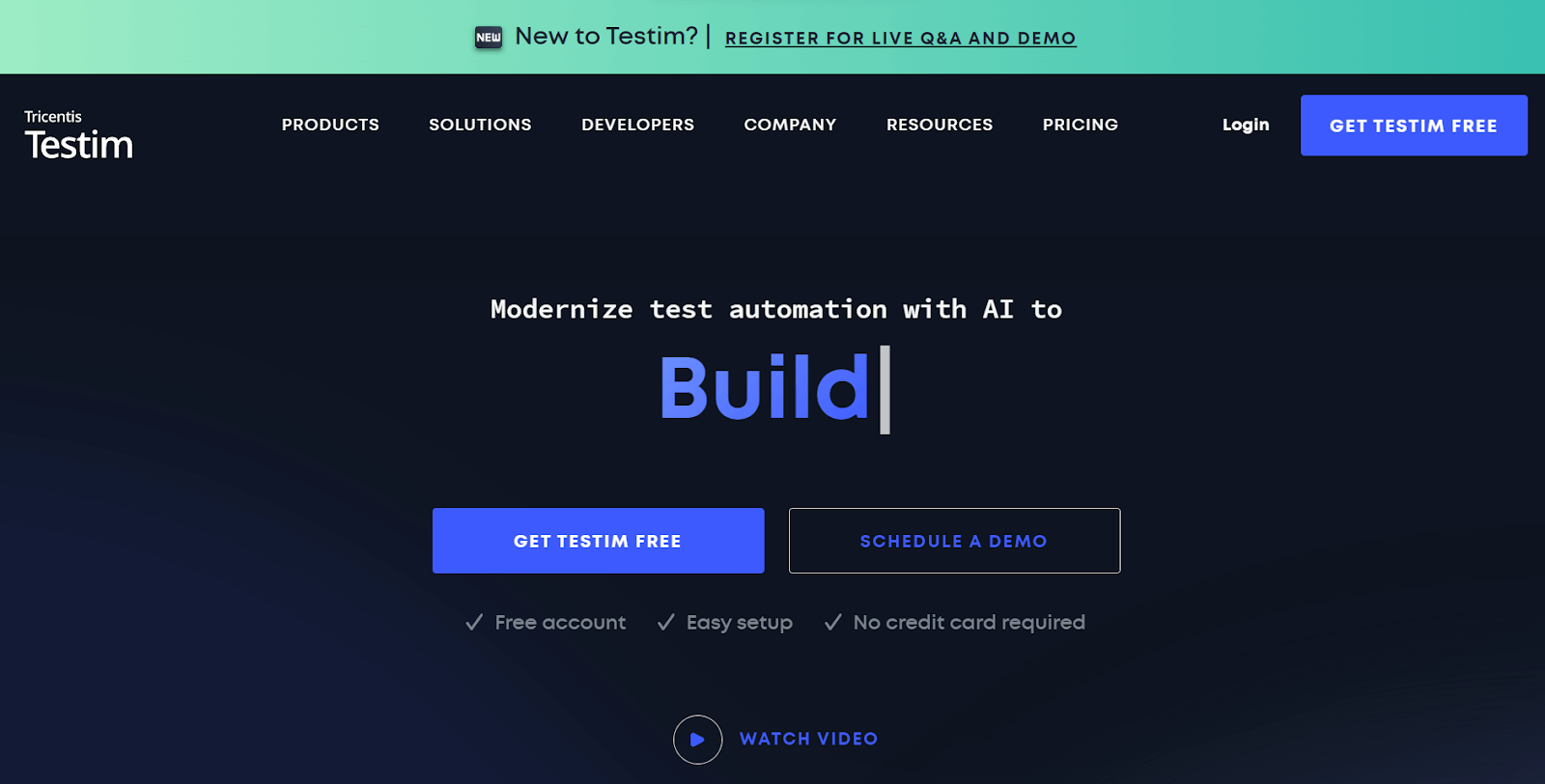
Testim is one of the popular codeless testing tools that aid in the quick and simple creation and execution of automated tests by QA teams. Testim makes it simple for testers to build and maintain automated test cases without programming knowledge because of its user-friendly drag-and-drop interface and AI-powered testing capabilities.
Core Features:
- By automatically creating test cases and locating flaws, its AI-powered testing capabilities contribute to the acceleration of the test process.
- Used to test APIs, web applications, and mobile applications, guaranteeing that every component of the software is adequately tested.
- Highly repeatable and reliable, lowering the possibility of human mistakes and guaranteeing that software product have undergone extensive testing.
- Without any programming experience, testers can easily design and manage test cases using Testim’s drag-and-drop interface.
11. TestProject
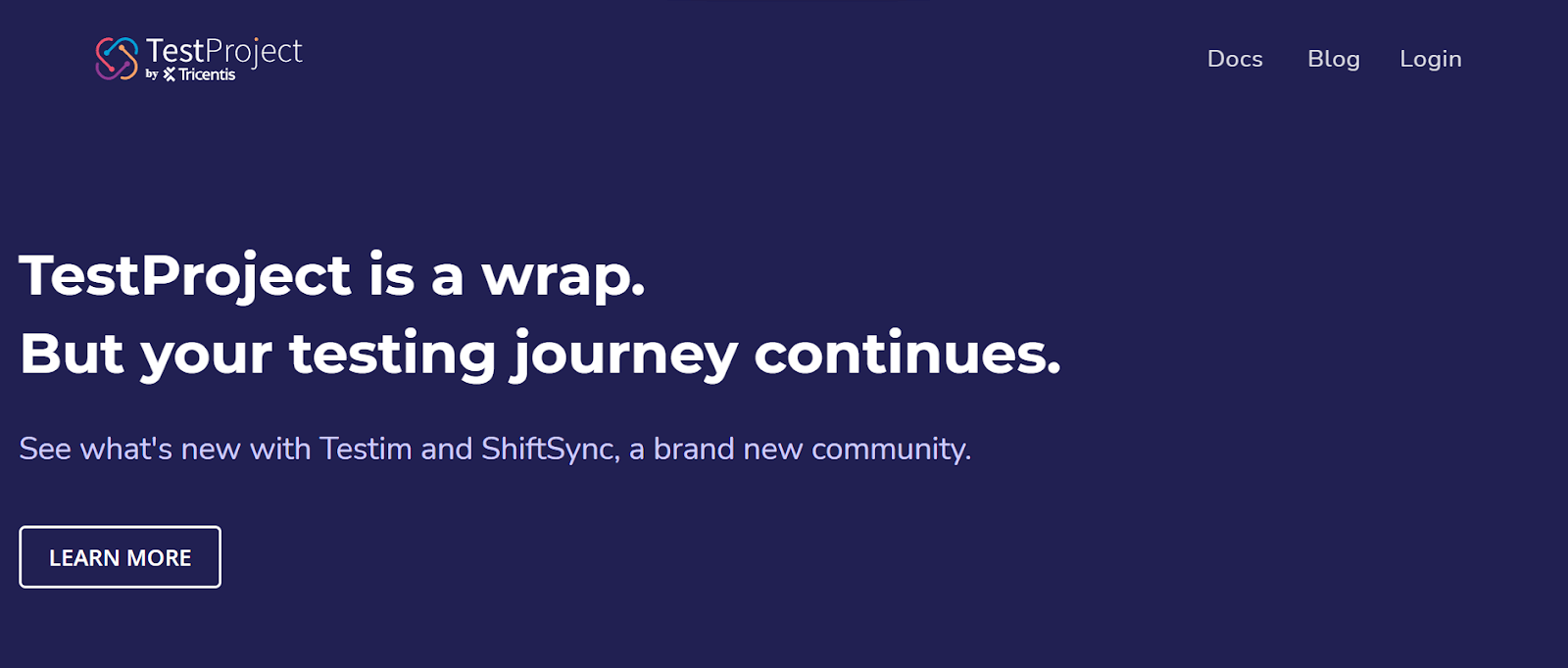
TestProject is one of the popular, free, open-source codeless testing tools that allows QA teams to create and execute automated tests easily. TestProject’s user-friendly drag-and-drop interface and robust testing features make it simple for testers to build and maintain automated test cases without the need for programming expertise.
Core Features:
- Without requiring programming knowledge, testers can easily design and manage test cases using TestProject’s drag-and-drop interface.
- It is a flexible testing solution for QA teams because it can be used to test web applications, mobile apps, and APIs.
- It provides thorough information on test results that help testers quickly discover and resolve problems.
- Collaboration and sharing of test results is simple.
- Allows QA teams to automate testing and find issues early in the development cycle by supporting continuous testing.
12. Tricentis Tosca
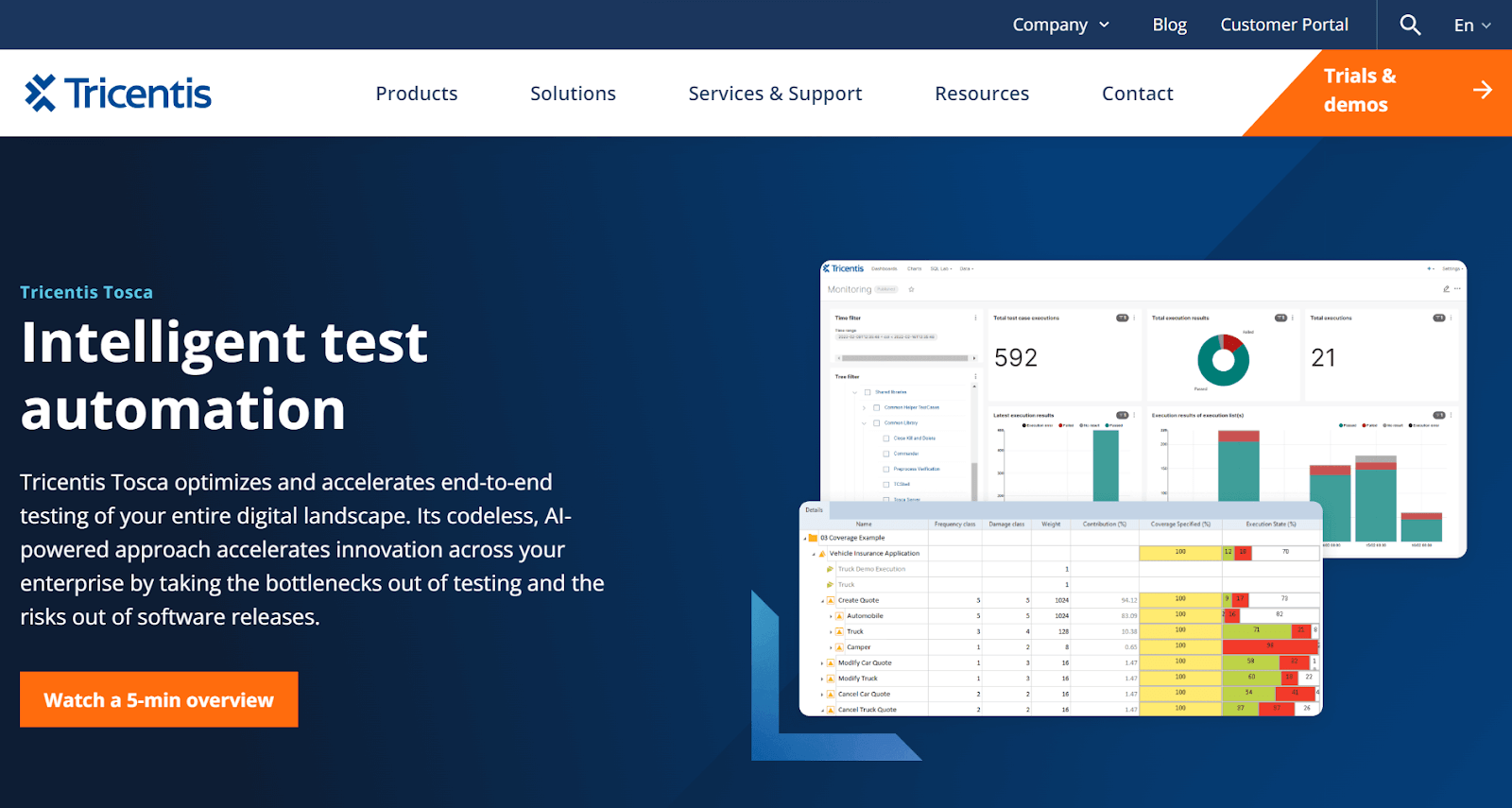
Tricentis Tosca is one of the popular codeless testing tools that help organizations improve their software testing process by providing end-to-end test automation. It makes it simple for testers to build and run automated test cases without the need for extensive programming knowledge. Tosca supports a wide range of technologies, including on the web, desktop, mobile, and mainframe applications, and offers a variety of testing features, including functional testing, performance testing, and regression testing.
Core Features:
- Enables the creation and execution of automated test cases by testers without the need for in-depth programming expertise.
- Provides thorough information on test results that help testers quickly discover and resolve problems.
- Allows for smooth integration with widely used development tools like Jira, Jenkins, and Selenium, which makes it simple to integrate automated testing into existing workflows.
- Supports agile testing methodologies, allowing QA teams to keep up with the fast-paced nature of modern software development.
13. TestComplete
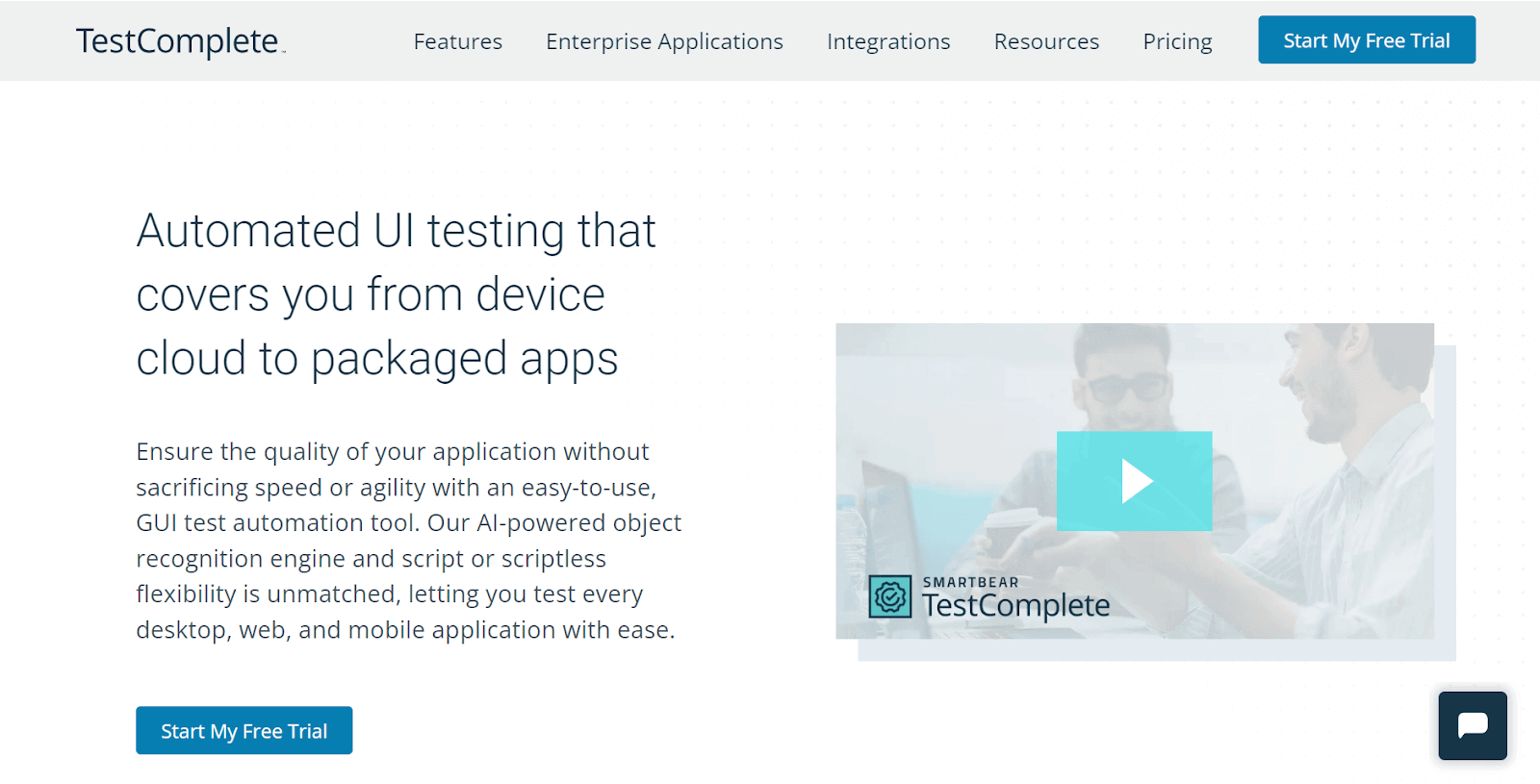
TestComplete is one of the popular codeless testing tools developed by SmartBear Software that allows users to create, manage and execute automated tests for desktop, web, and mobile applications. TestComplete uses a modular approach to testing, with modules for desktop, web, and mobile testing and load testing, API testing, and test management.
TestComplete has a range of built-in features for test automation, including record and playback functionality, visual object recognition, keyword-driven testing, and the ability to write custom scripts in various programming languages.
Core Features:
- Non-technical people may easily develop and run automated tests using a visual editor, which enables users to write tests without scripting.
- Provides thorough reports of test results, pictures, logs, and data, enabling customers to spot and resolve any problems immediately.
- Users can simply adapt their testing environment to suit their unique demands with a modular testing strategy.
- Supports desktop, web, and mobile application testing across various platforms, including Windows, macOS, iOS, and Android.
14. SoapUI
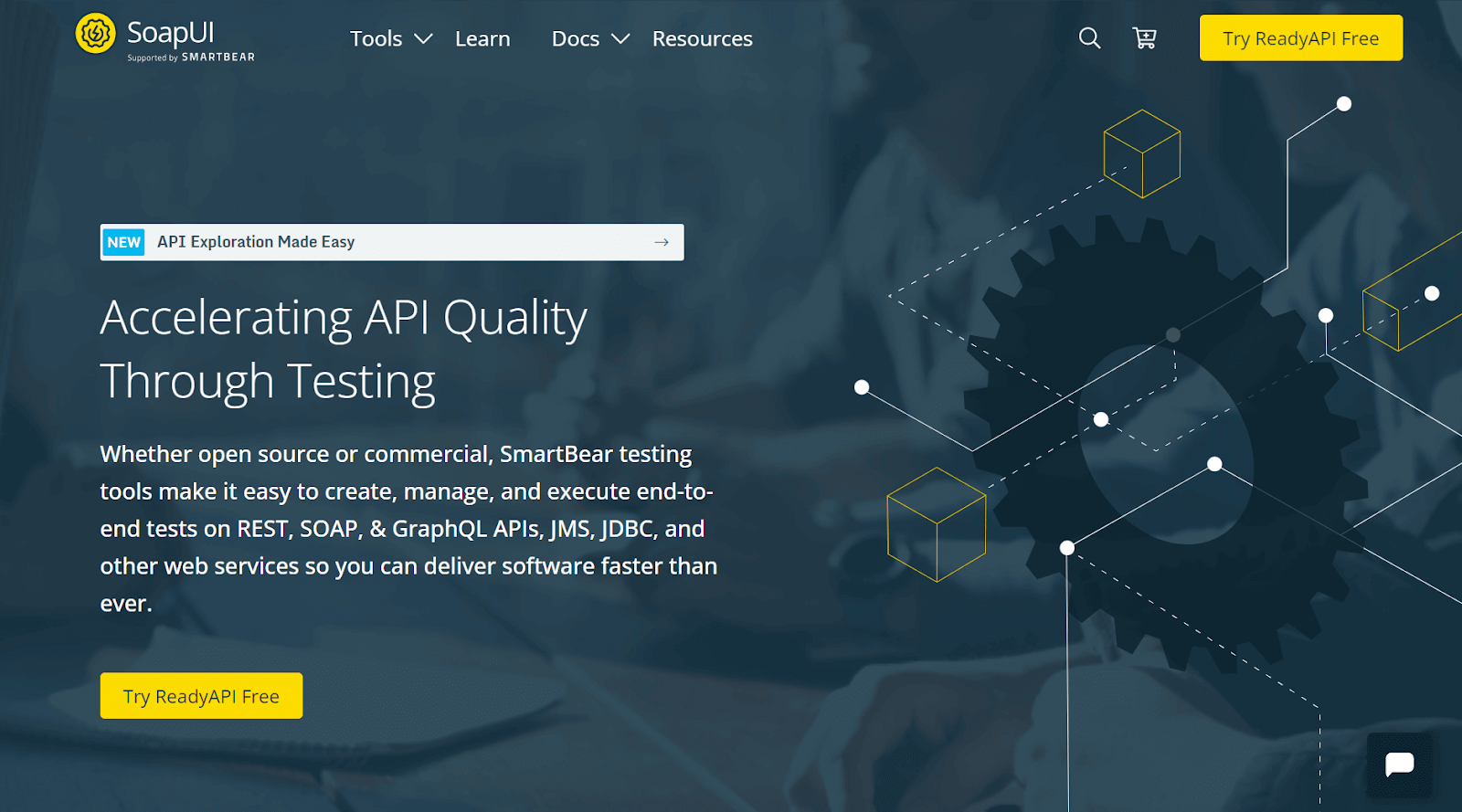
SoapUI is one of the codeless testing tools created especially for testing web services, REST APIs, and SOAP APIs. It provides several capabilities that enable testers to rapidly and easily design and execute automated tests without the need for in-depth programming skills. All testers can use SoapUI, as it comes in free and paid editions.
Core Features:
- Offers codeless automation capabilities, enabling testers to create and execute automated test cases without writing any code.
- Supports a range of protocols, including HTTP, JMS, JDBC, REST, and SOAP, making it a versatile testing tool for various applications.
- Provides detailed reports on test results, making it easy to identify and fix issues quickly. It also offers advanced analytics capabilities, enabling testers to identify trends and patterns in their test results.
15. Applitools
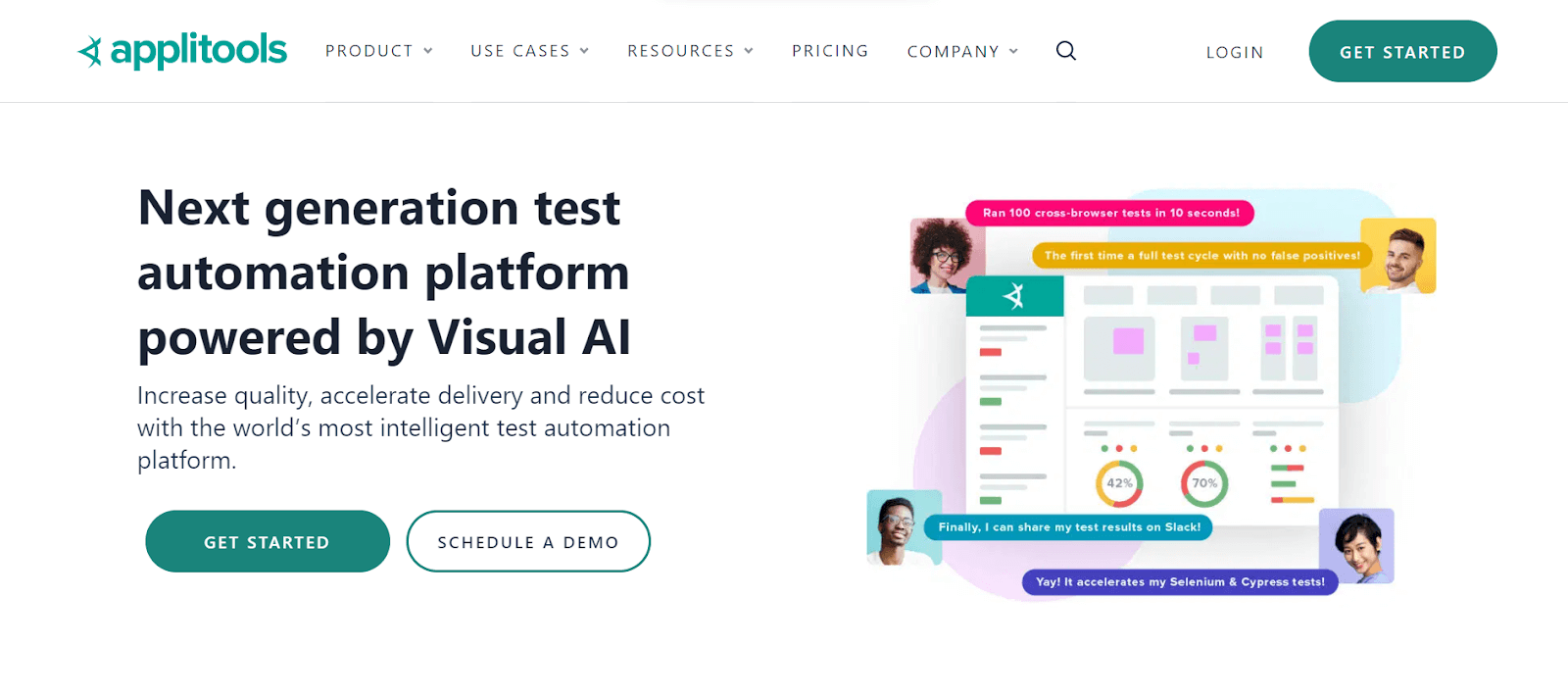
Applitools is a cloud-based visual testing platform where developers and QA teams can simply automate visual UI testing and find visual problems across various devices, browsers, and screen sizes. Users can easily detect layout and visual changes, such as misaligned items, improper font sizes, and more, using Applitools, guaranteeing a consistent user interface (UI) on all devices.
Core Features:
- With Applitools, users can simply automate visual testing without writing any code using the visual testing editor. Users may quickly choose the UI components that need to be tested and define the testing criteria using the editor. The platform also offers a selection of pre-written test scripts that users can easily modify to suit their testing requirements.
- Users can test their applications using Applitools to ensure a consistent user interface and experience across a range of platforms, browsers, and screen sizes. Additionally, the platform offers a variety of connectors with well-known testing frameworks and tools, like Selenium and Appium, making it simple to integrate visual testing into the current testing workflows.
- Applitools’ AI-powered visual testing engine quickly identifies any layout and visual changes, including misaligned elements, incorrect font sizes, and more, making it easy for teams to identify and resolve issues before they impact end users. The platform also provides an intuitive dashboard that shows the visual history of the application, making it easy to track changes over time and identify any trends or patterns.
16. Endtest
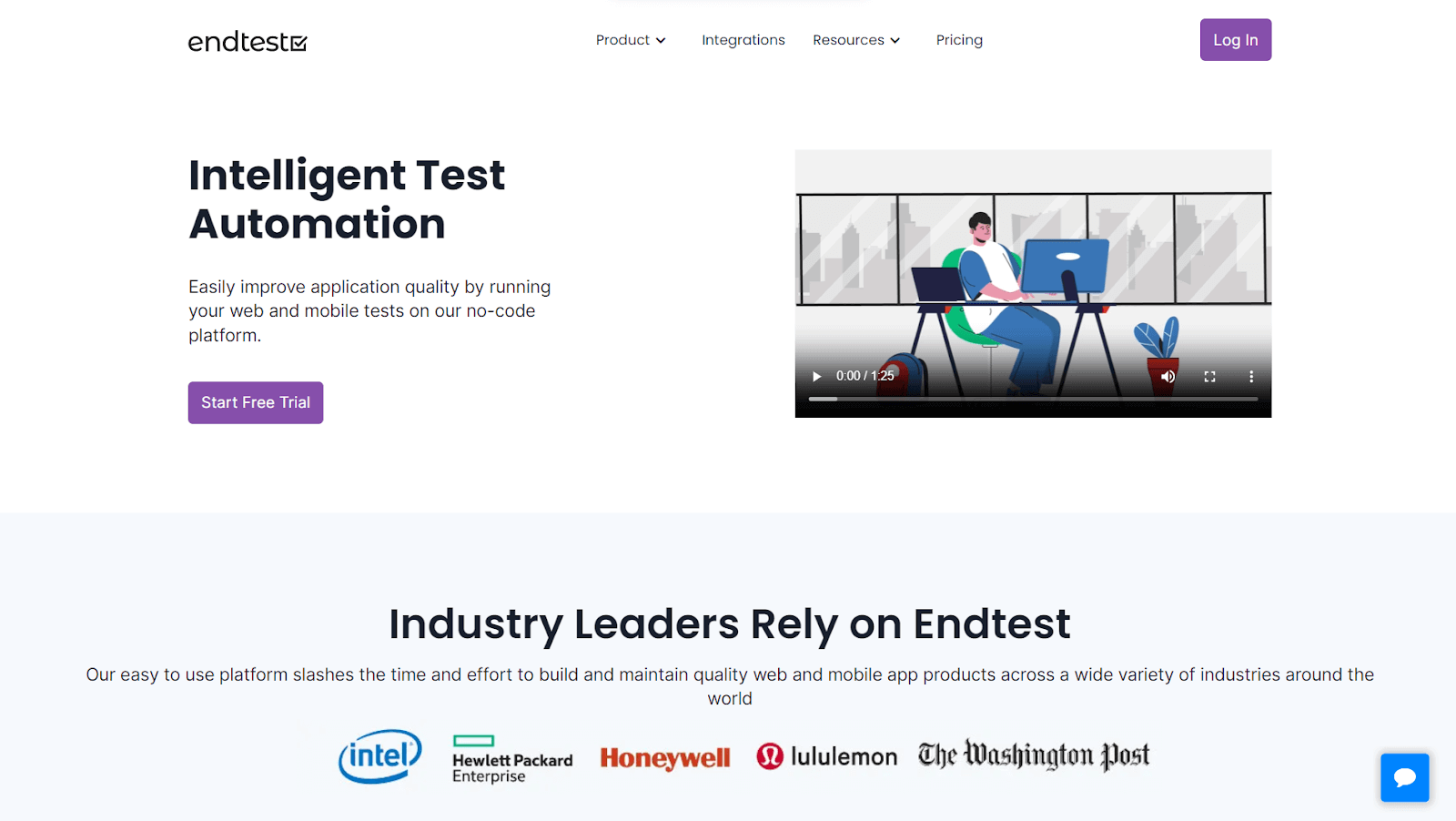
Endtest is considered one of the top codeless testing tools for web and mobile applications that run tests automatically without requiring users to write any code. Users can create automated test scripts in various programming languages, including Java, Python, Ruby, and others, using a visual test recorder that the software provides.
EndTest supports a variety of browsers, gadgets, and operating systems. Additionally, it has advanced capabilities, including integration with well-known CI/CD systems, parallel testing, and thorough reporting and analytics.
Users can quickly design intricate test scenarios that involve several user activities and data-driven tests. Technical and non-technical users can easily create and edit documents with its user-friendly design and drag-and-drop feature.
Core Features:
- Codeless test automation for web and mobile applications.
- Easy test generation with intuitive drag-and-drop UI.
- To save time and work, pre-built test scenarios and templates are used.
- Scalable for extensive testing initiatives.
- Supports testing across several devices and browsers simultaneously.
- Integrates with popular development tools and services.
17. BugBug.io
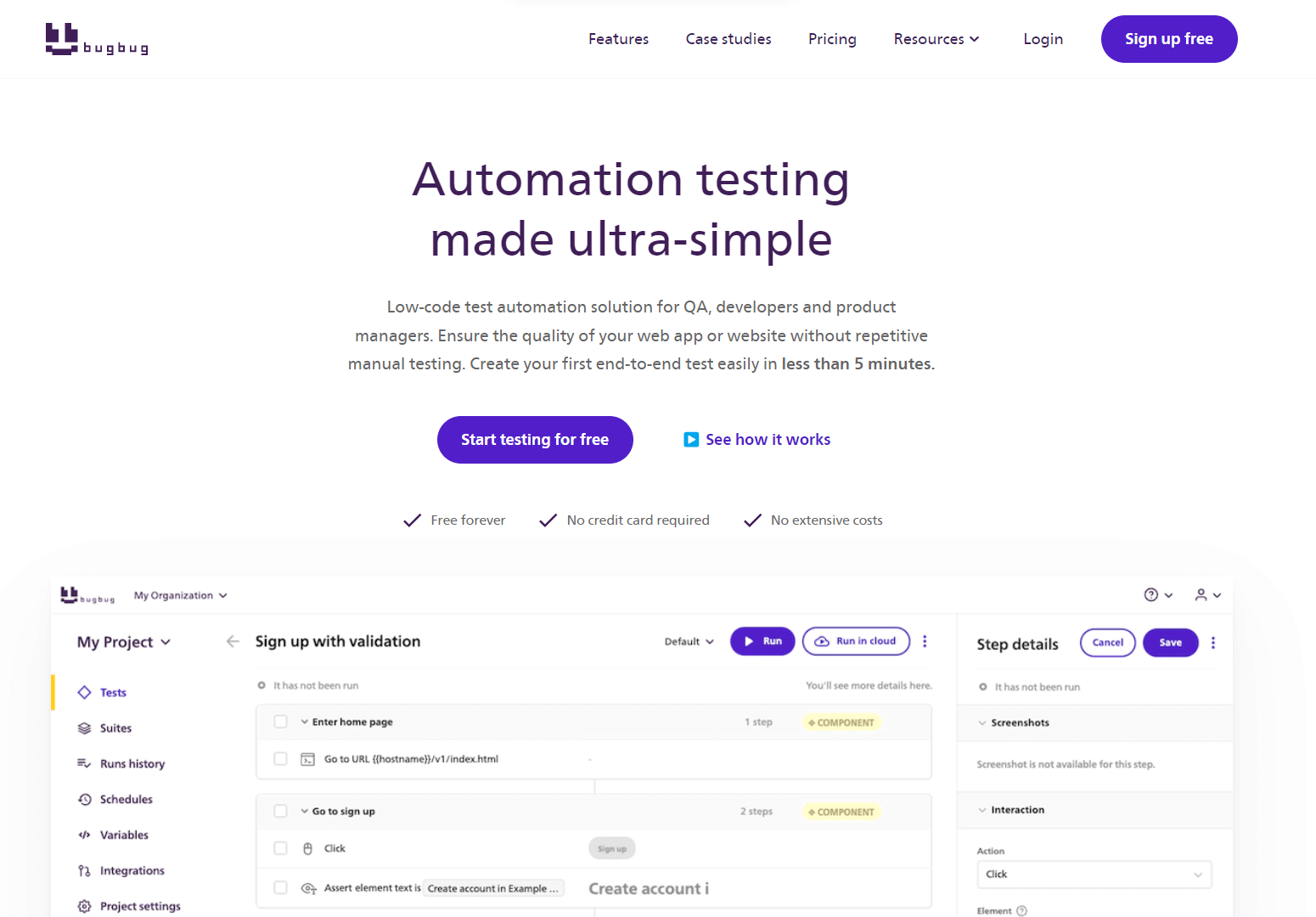
BugBug.io is a codeless testing tool that makes it easy to create and execute automated tests without the need for programming skills. With its visual interface, users can easily create test cases by dragging and dropping components from their application’s user interface.
The tool is compatible with desktop, mobile, and web apps. Additionally, it supports several frameworks and technologies, including React, Angular, Vue.js, jQuery, Xamarin, Appium, and Selenium.
Core Features:
- The codeless testing approach enables users to create tests quickly and easily without coding.
- Supports a wide range of testing types, including functional, regression, performance, and visual testing.
- Cloud-based infrastructure enables easy collaboration and sharing of test results.
- Cross-browser visual testing ensures the consistent appearance of web applications.
- A User-friendly interface makes it easy to create, run, and manage tests.
18. DoesQA
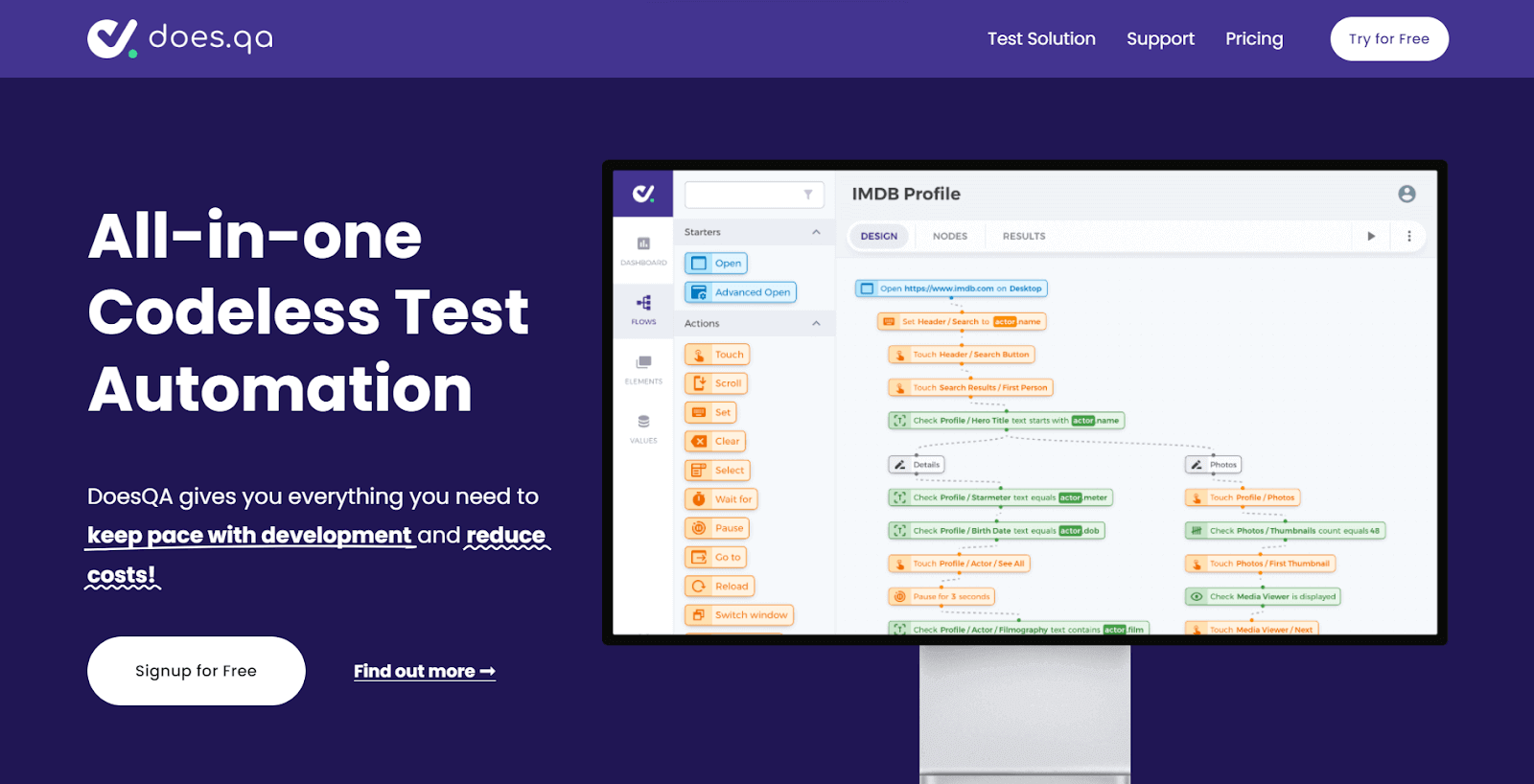
DoesQA is a cloud-based codeless testing tool that allows users to create and execute automated tests for web and mobile applications without writing any code. Users may create tests quickly and easily, even without prior programming experience, with its intuitive drag-and-drop interface. The platform offers a complete testing solution for businesses of all sizes by integrating with popular third-party tools and pre-built test modules.
Core Features:
- DoesQA’s AI-powered engine can guarantee that all application’s critical routes are covered by autonomously generating test scenarios based on user behavior.
- Provides a complete testing solution for web and mobile applications by integrating with well-liked third-party tools.
- Offers integrated reporting and analytics features, allowing teams to monitor test outcomes and pinpoint areas in need of development.
19. LoadUI Pro
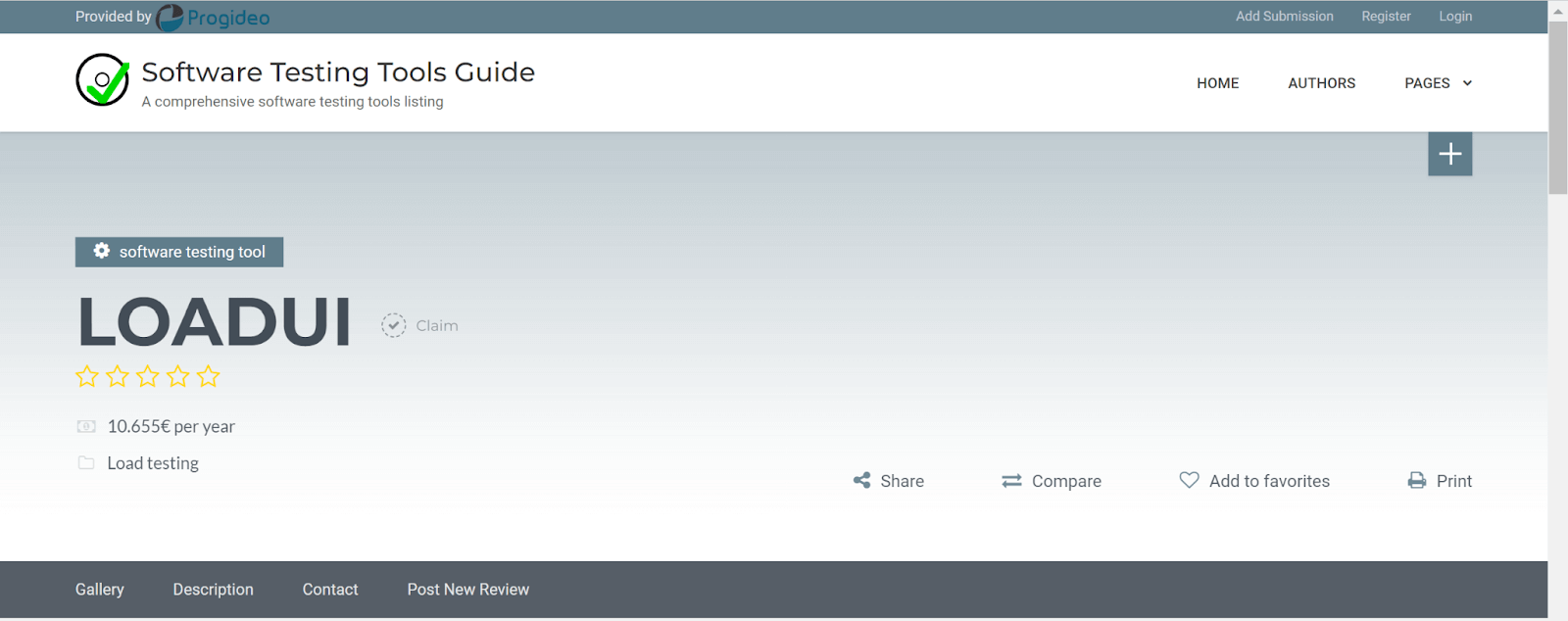
LoadUI Pro is a codeless testing tool designed for load testing of web applications, REST APIs, and SOAP web services. Before delivering an application or service to production, testers can simulate real-world traffic patterns using a variety of features provided by LoadUI Pro and spot potential performance problems.
Core Features:
- Testers of all skill levels can build and run load tests without needing a deep understanding of programming.
- Helps testers detect potential performance issues by simulating real-world traffic scenarios, including various user profiles, network circumstances, and network conditions.
- Simple to integrate with other testing and development tools like Jenkins and JIRA, making load testing a part of existing workflows.
- Allows testers to identify potential performance issues and improve the performance of their applications and services by providing detailed analytics and metrics.
20. ClicAutomate
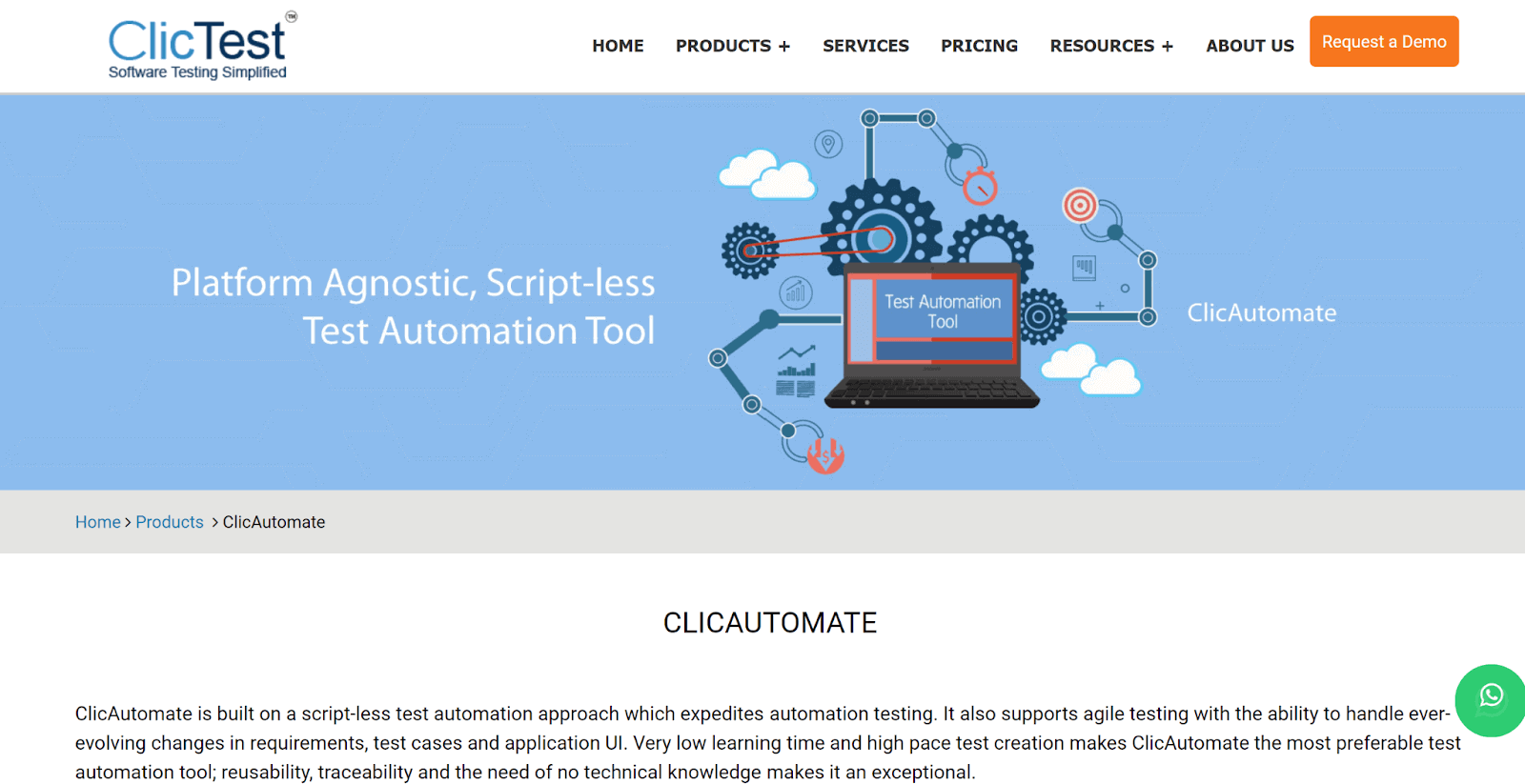
ClicAutomate is a codeless testing tool that allows users to automate functional testing, performance testing, and regression testing without requiring extensive programming knowledge. Users may simply develop and run test cases with drag-and-drop capabilities and a user-friendly interface. ClicAutomate offers integrations with well-known automation tools like Selenium, Appium, and TestNG and supports web, mobile, and desktop applications.
Core Features:
- Enables users to automate regression, functional, and performance testing for desktop, mobile, and web apps.
- Allows customers to integrate it into their current automation workflows and supports interaction with popular automation technologies like Selenium, Appium, and TestNG.
- Allows multiple users to collaborate on test automation projects, making managing and executing large-scale test automation projects easier.
- Provides detailed analytics and reporting features, enabling users to identify issues and track test automation progress over time.
21. UiPath Test Suite
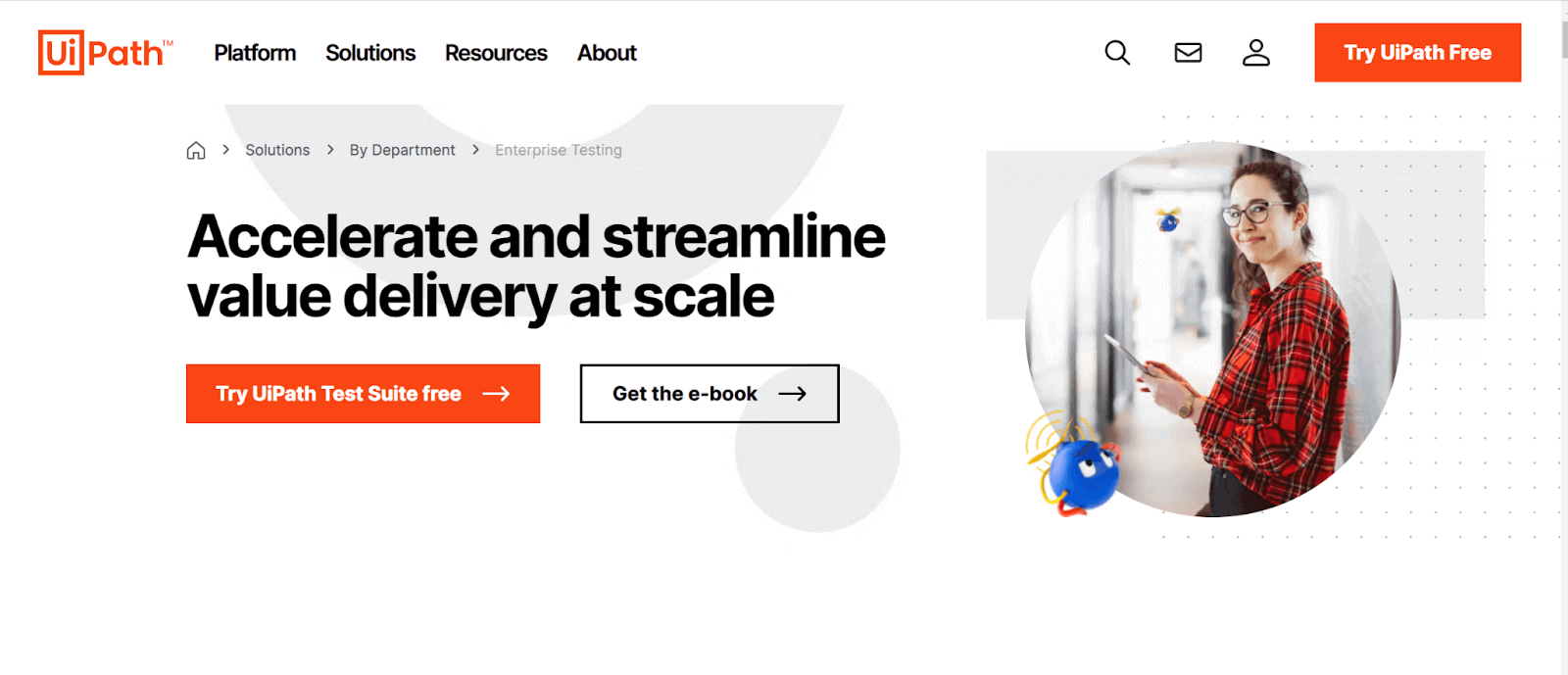
UiPath Test Suite is one of the powerful codeless testing tools designed to simplify the automation of test cases for web and desktop applications. It offers a user-friendly interface that enables users to create and run automated tests without coding skills, significantly reducing the time and effort required for software testing.
It makes it simple for testers to create and run end-to-end tests that mimic user actions, including clicking buttons, typing text, and moving between sites. Advanced capabilities like AI-based testing, image-based automation, and test data management are also included making it a complete solution for all testing requirements.
Core Features:
- Reduces the time and effort needed for testing by allowing testers to write and run automated tests without the requirement for coding knowledge.
- Supports complete testing of desktop and web apps, including automated testing using images and artificial intelligence.
- Enables teams to work together on testing tasks and to communicate test results and cases.
- Offers sophisticated features for handling test data, such as test data generation and data-driven testing.
- Provides real-time data and analytics on test execution, assisting teams in finding and promptly resolving problems.
22. Rapise
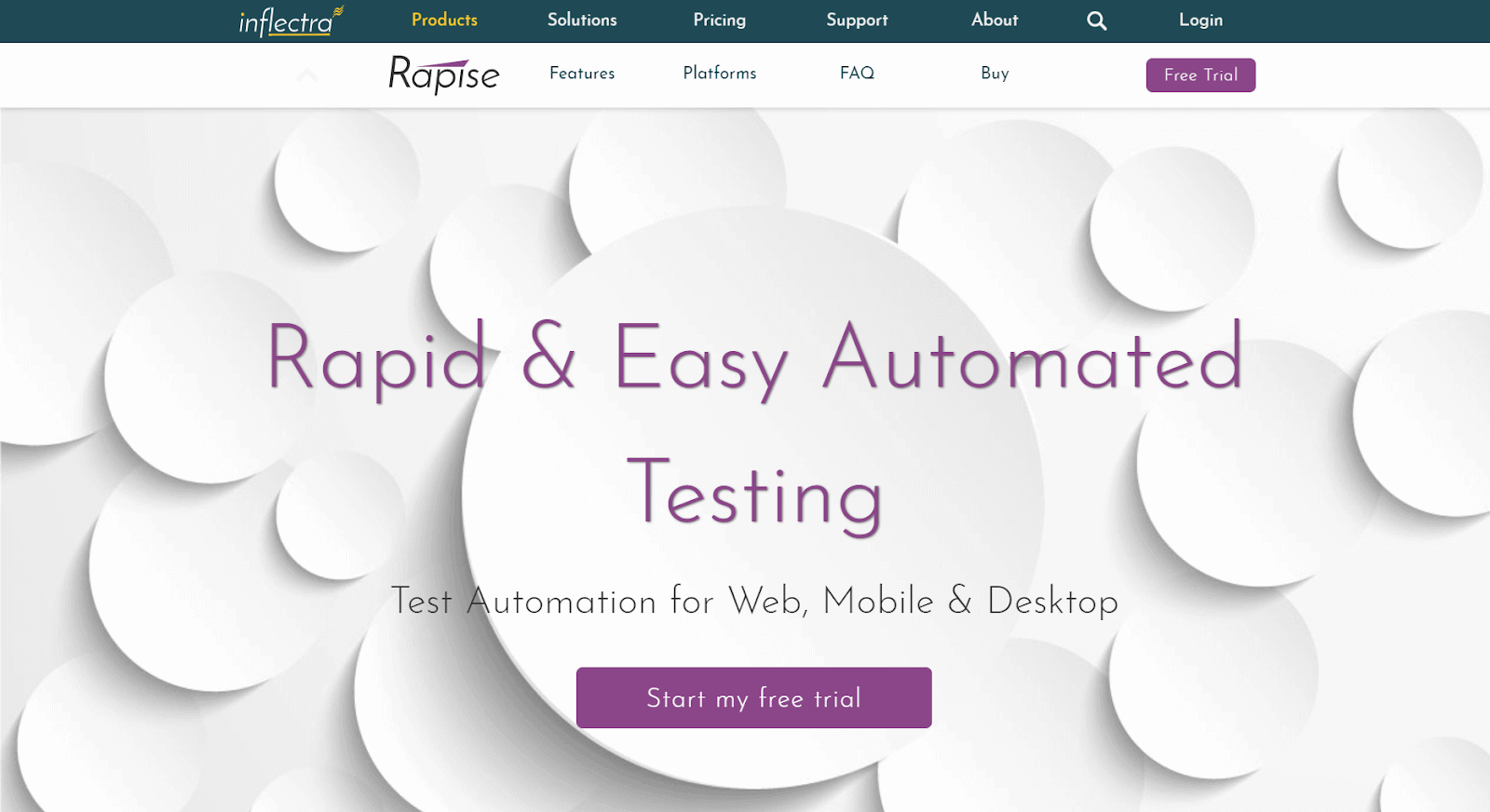
Rapise is a codeless testing tool that enables testing teams to create and execute automated tests without coding. It is a powerful tool that provides a complete testing solution for web, desktop, and mobile applications. Its intuitive visual interface allows users to easily create and maintain complex test cases and scenarios.
Rapise offers many features, such as object-based recording, test script editing, image-based testing, data-driven testing, and cross-browser testing. It also integrates with popular automation testing frameworks like Selenium and Appium, allowing users to leverage existing test cases and frameworks. Rapise also supports agile development methodologies by offering continuous integration and delivery capabilities.
Core Features:
- With its easy-to-use visual interface, testers can create and execute tests without any coding knowledge.
- Allows testers to identify objects in the application and use them as building blocks to create test cases.
- Supports testing on various platforms, including web, desktop, and mobile applications.
- Supports agile development methodologies by providing continuous integration and delivery capabilities.
23. Virtuoso
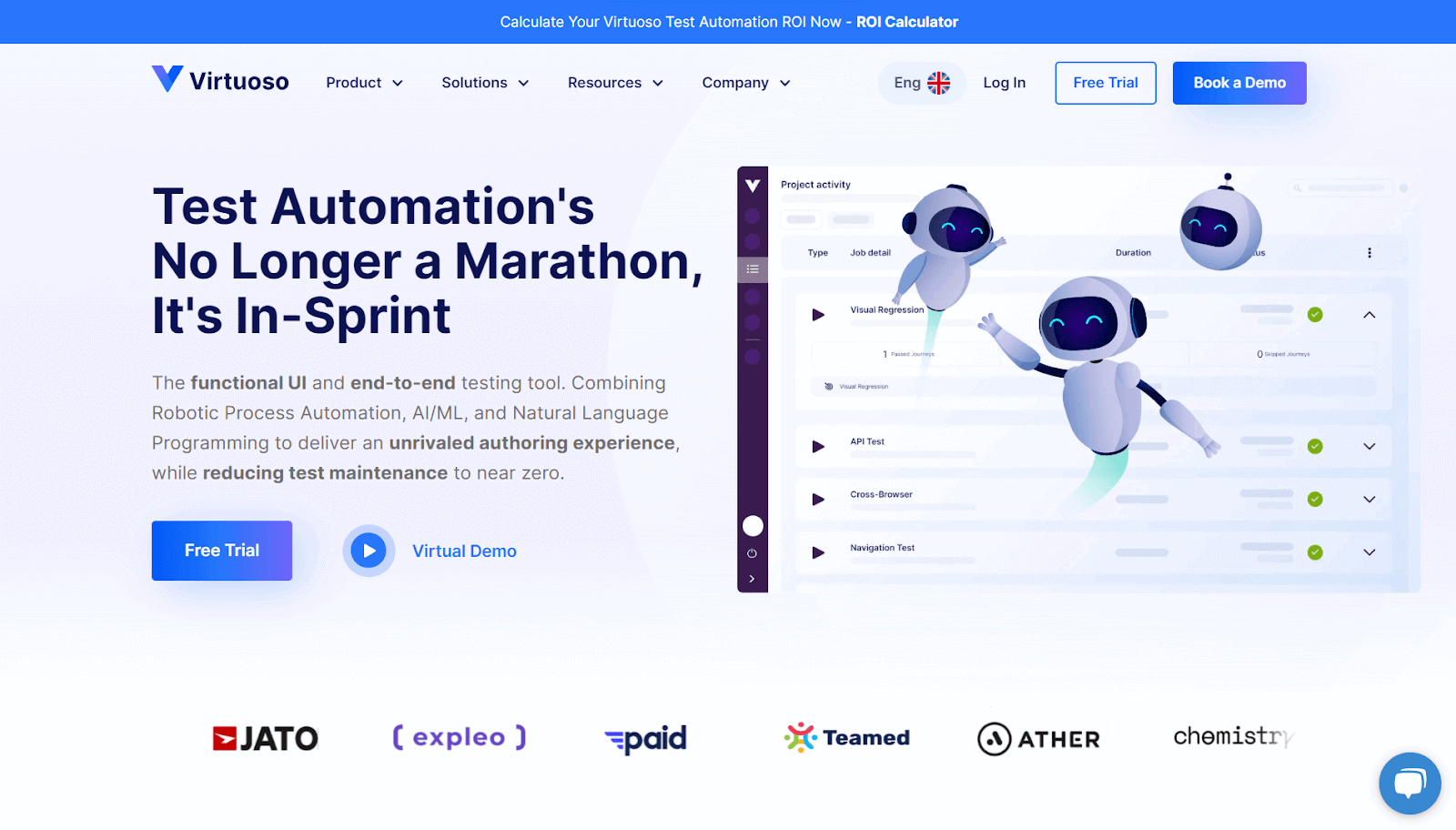
Virtuoso is a codeless testing platform that enables organizations to design and run automated tests without the need for coding expertise. Users can create and execute tests using a visual method with a user-friendly interface it provides. As Virtuoso offers testing for desktop, mobile, and web applications, it is a flexible solution for a range of platforms. With its intuitive drag-and-drop functionality, users can easily create test cases by assembling different actions and interactions within the application under test.
Core Features:
- Non-technical stakeholders can build and run tests because no coding knowledge is required.
- Supports desktop, mobile, and web applications, enabling thorough testing across several platforms.
- The user experience is improved, and test case generation is made simpler with the drag-and-drop feature.
- Ensures uniformity and compatibility across different contexts.
- Integrates with popular tools and frameworks, enhancing collaboration and fitting into existing workflows.
24. testRigo
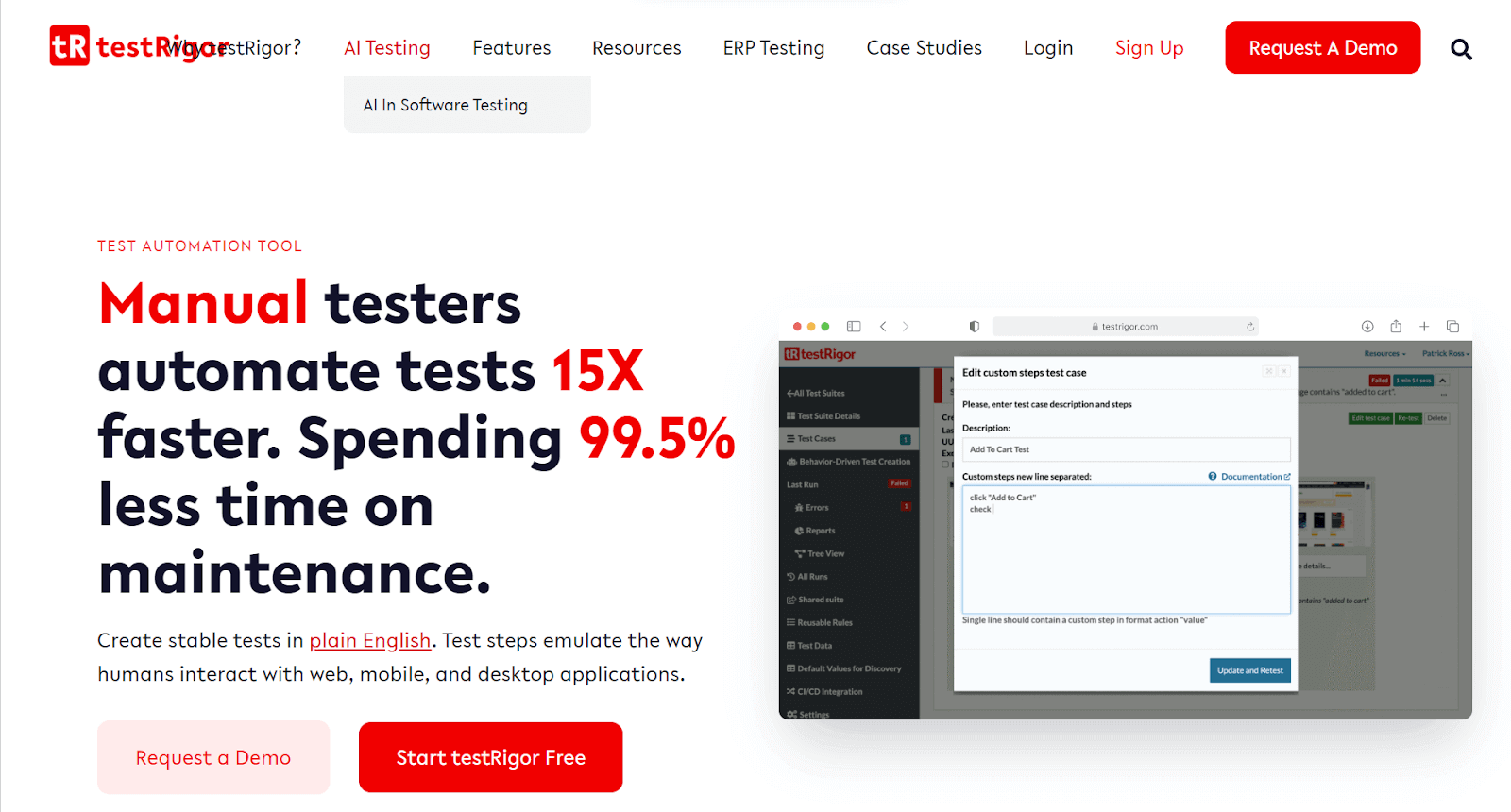
testRigor is a codeless test automation platform created to assist businesses in automating their testing procedure without the requirement for coding expertise. The tool provides various capabilities that make it simple for teams to plan, execute, and manage automated tests. To quickly develop automated test cases, it leverages machine learning algorithms to recognize and classify UI elements.
Core Features:
- testRigor’s intuitive interface allows teams to create automated tests without requiring coding knowledge, reducing the need for technical expertise.
- Uses machine learning algorithms to identify UI elements automatically, making test case creation faster and more efficient.
- Seamlessly integrates with popular testing tools, allowing teams to incorporate test automation into their existing workflows.
- Provides real-time analytics and reports, enabling teams to identify and address issues quickly.
- Pay-as-you-go pricing model allows teams to scale their testing efforts based on their needs, making it a cost-effective option for businesses of all sizes.
25. TestingWhiz
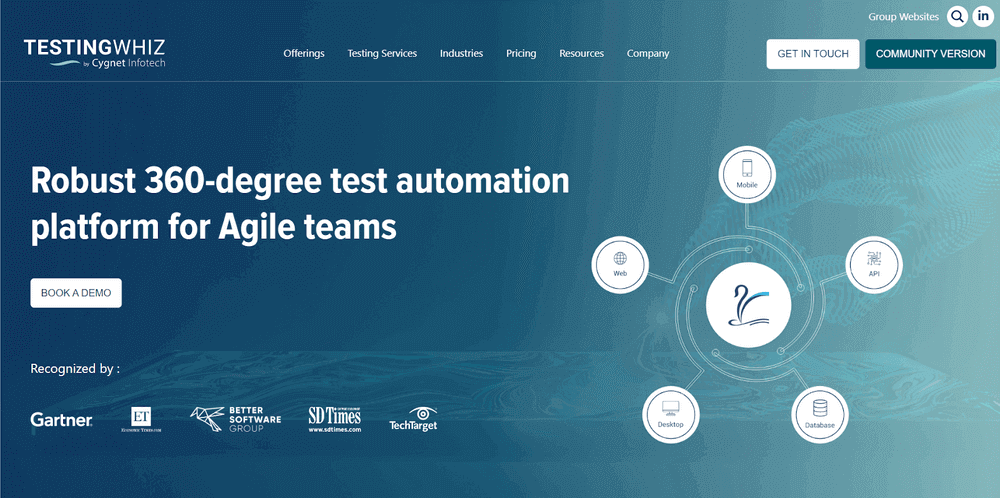
TestingWhiz is yet another one of the best codeless testing tools that allows testers to create and execute automated tests without any programming knowledge. Both technical and non-technical team members can easily use its drag-and-drop functionality and simple, user-friendly interface with ease. It supports a variety of platforms and technologies, including cloud, desktop, mobile, and web applications.
Core Features:
- Codeless test automation for both technical and non-technical team members.
- Wide range of technology and platform support.
- Advanced features such as keyword-driven testing and data-driven testing.
- Cross-browser testing capabilities to ensure consistent performance across different browsers.
- Comprehensive reporting and analytics to identify and resolve issues quickly.
26. Testsigma
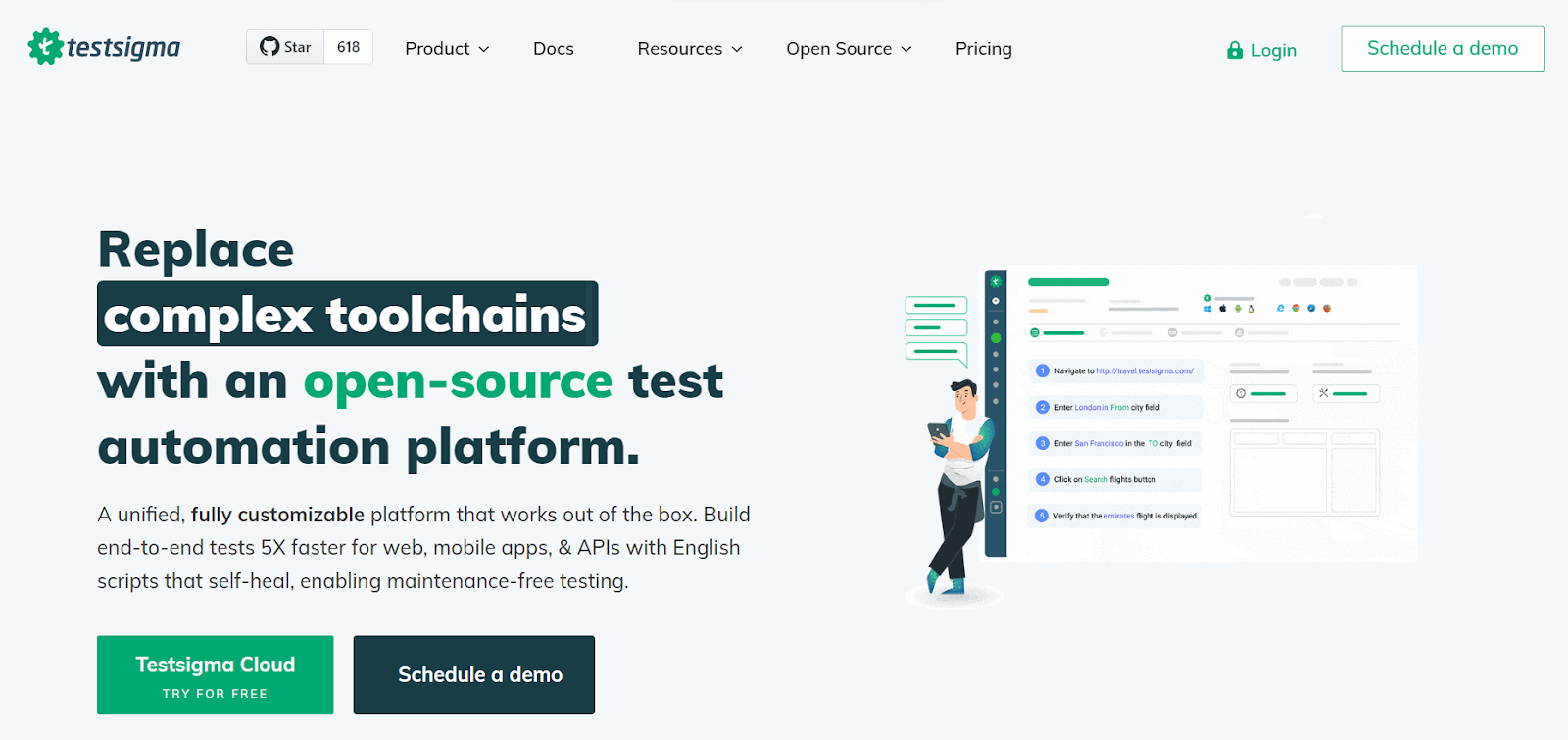
Testsigma is a cloud-based test automation platform that offers codeless test creation and maintenance, making it easier for QA teams to collaborate and build automated tests faster. The platform uses AI-powered testing to generate and execute tests for web and mobile applications without requiring programming skills. It comes with pre-built integrations with popular testing frameworks and CI/CD tools, enabling teams to incorporate Testsigma into their existing development workflows seamlessly.
Core Features:
- Eliminates the need for coding skills, making it easier for QA teams to create and maintain automated tests.
- Uses artificial intelligence to generate and execute tests, improving test accuracy and efficiency.
- Integrates with popular testing frameworks and CI/CD tools, enabling teams to incorporate Testsigma into their existing workflows easily.
- Enables teams to execute tests in parallel, significantly reducing testing time and increasing test coverage.
- Provides detailed test reports and analytics, giving teams valuable insights into the quality of their applications.
27. TestGrid
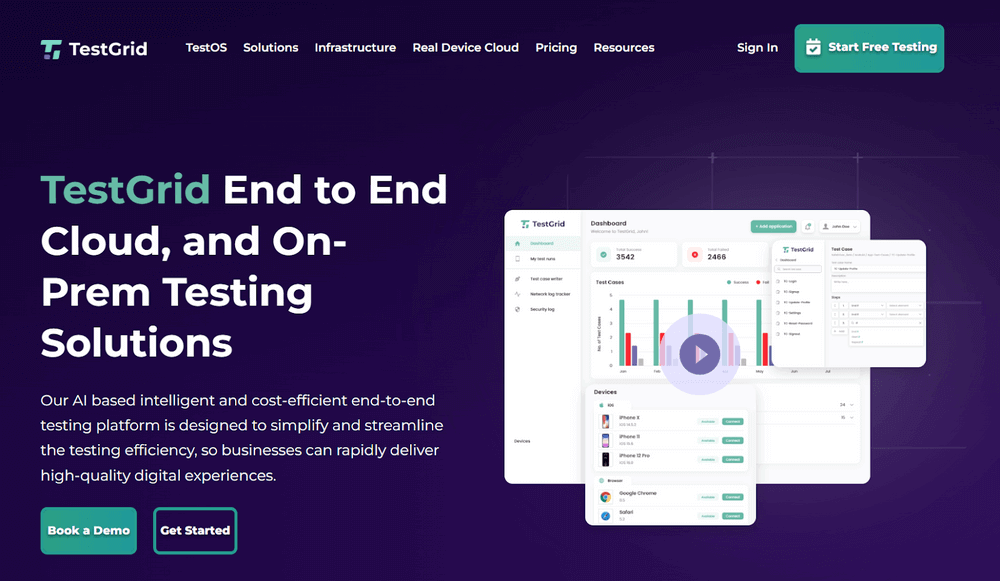
TestGrid comes under the list of popular codeless testing tools that enables software testing teams to create and execute automated tests quickly and efficiently. It offers a simple and intuitive interface that allows users to create and run automated tests without any programming knowledge easily. TestGrid also supports web and mobile applications and provides real-time analytics and insights for better decision-making.
Core Features:
- Easy-to-use interface for creating and executing automated tests without programming knowledge.
- Real-time analytics and insights for identifying and resolving issues quickly.
- Supports web and mobile applications, as well as cross-browser testing capabilities.
28. Ghost Inspector
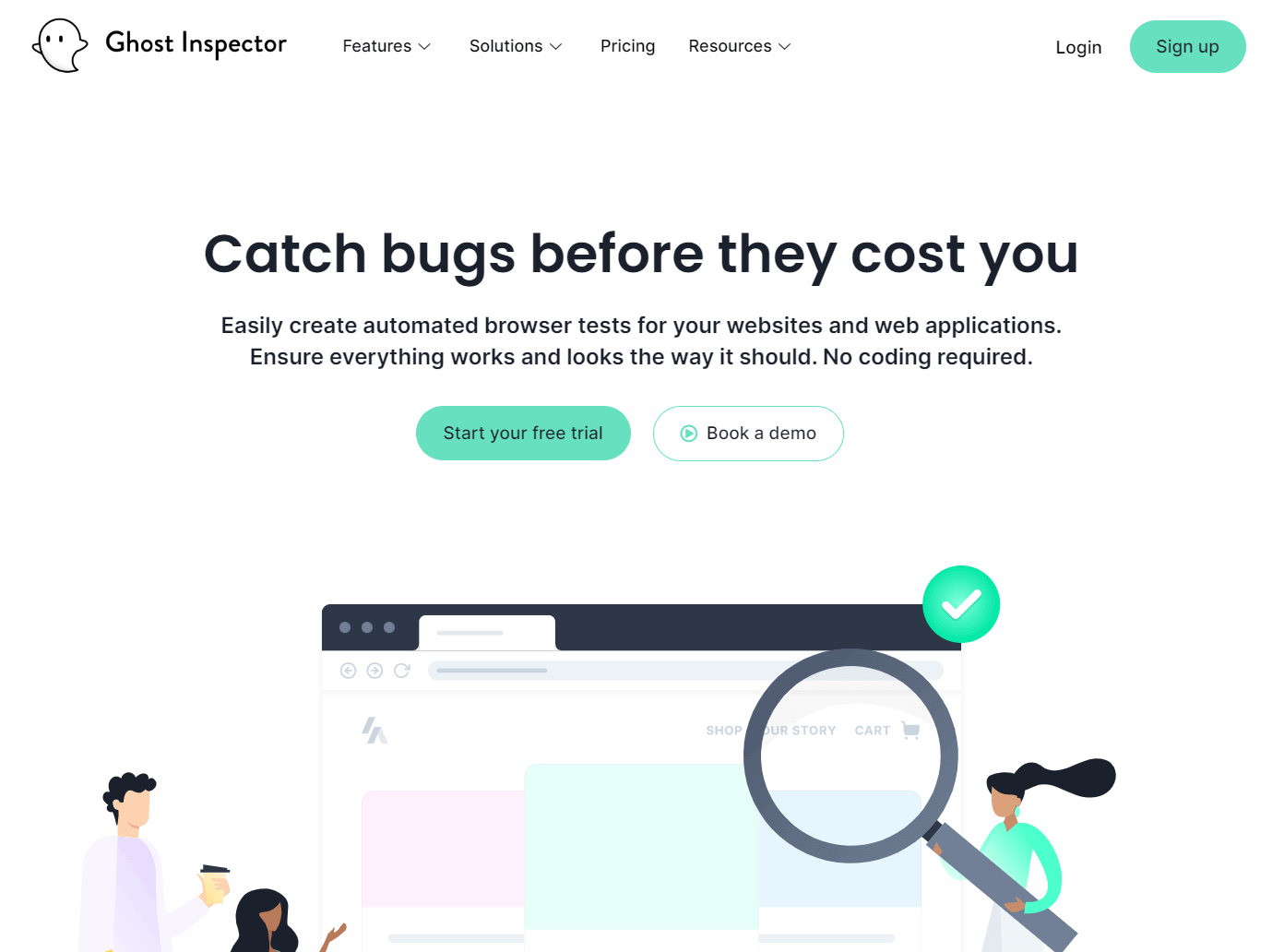
Ghost Inspector is one of the powerful codeless testing tools that allows users to easily create and manage automated tests without any programming knowledge. The tool is designed to streamline the testing process by providing an intuitive interface that allows testers to quickly create and run tests and manage and analyze test results. Ghost Inspector supports a variety of web technologies and applications, making it a versatile choice for testing teams across different industries.
Core Features:
- Ghost Inspector runs in the cloud, allowing testers to run tests from anywhere with an internet connection.
- Test runs can be scheduled at specific times, allowing teams to ensure that their tests are running consistently and regularly.
- Integrates with a variety of other tools, including JIRA, Slack, and Zapier, allowing teams to manage their testing workflows and results across different platforms easily.
29. Preflight
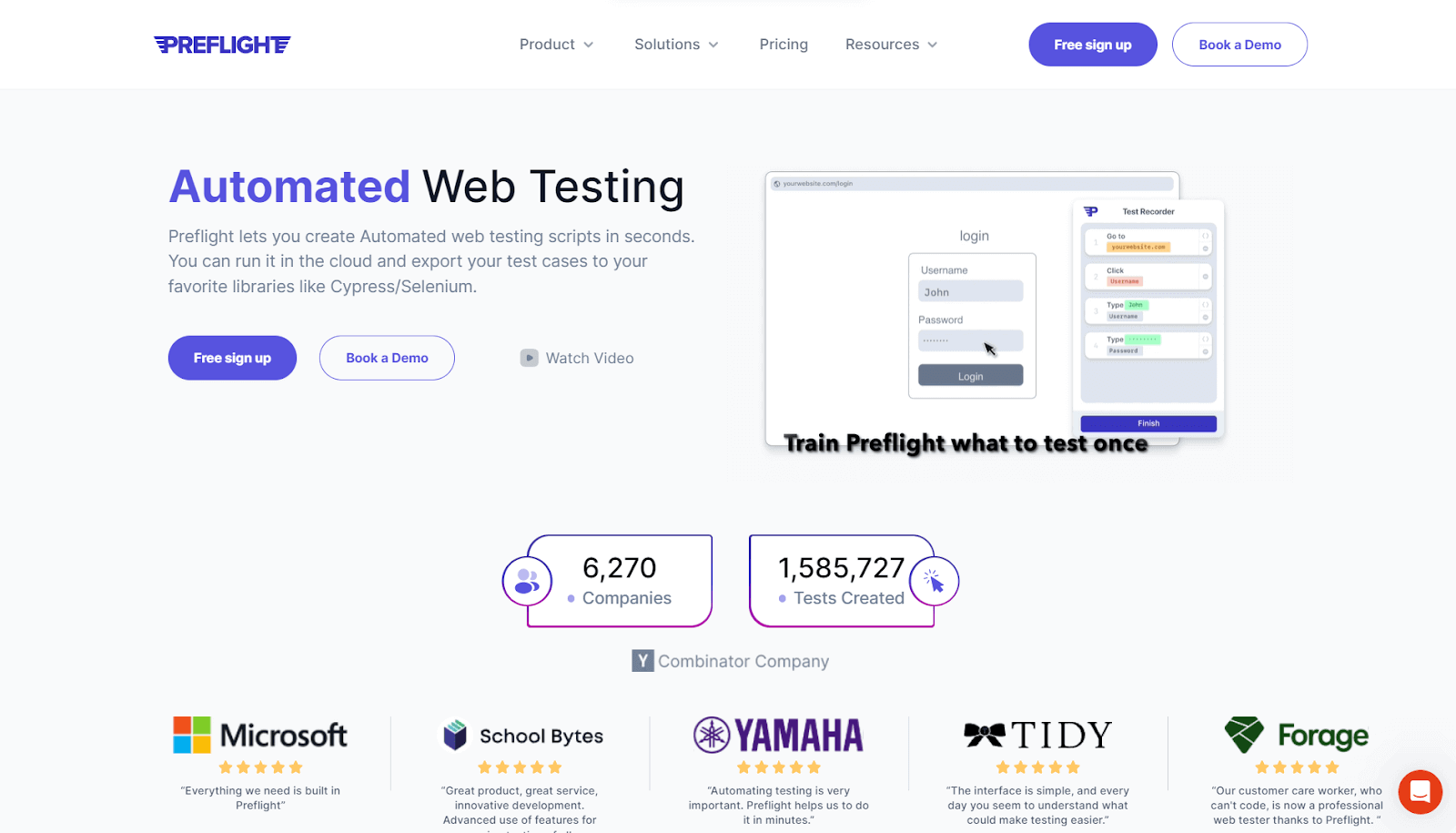
Preflight is a cloud-based codeless testing tool designed for web and mobile applications. It helps teams to automate their end-to-end testing process and achieve continuous testing without any technical skills. Preflight provides an intuitive drag-and-drop interface to create and execute test cases and real-time analytics to help users track the test results and identify issues quickly.
Core Features:
- Preflight’s drag-and-drop interface allows users to create and execute test cases without writing any code. This feature makes testing accessible to team members who don’t have technical skills, reducing the workload on developers.
- Generates test cases automatically based on user actions, saving time and effort in test case creation.
- Provides real-time analytics and test reports, making it easy to track test results and identify issues quickly.
- Integrates with popular tools like Jira, Slack, and Trello, making it easy to manage test cases, track bugs, and collaborate with team members.
30. Reflect
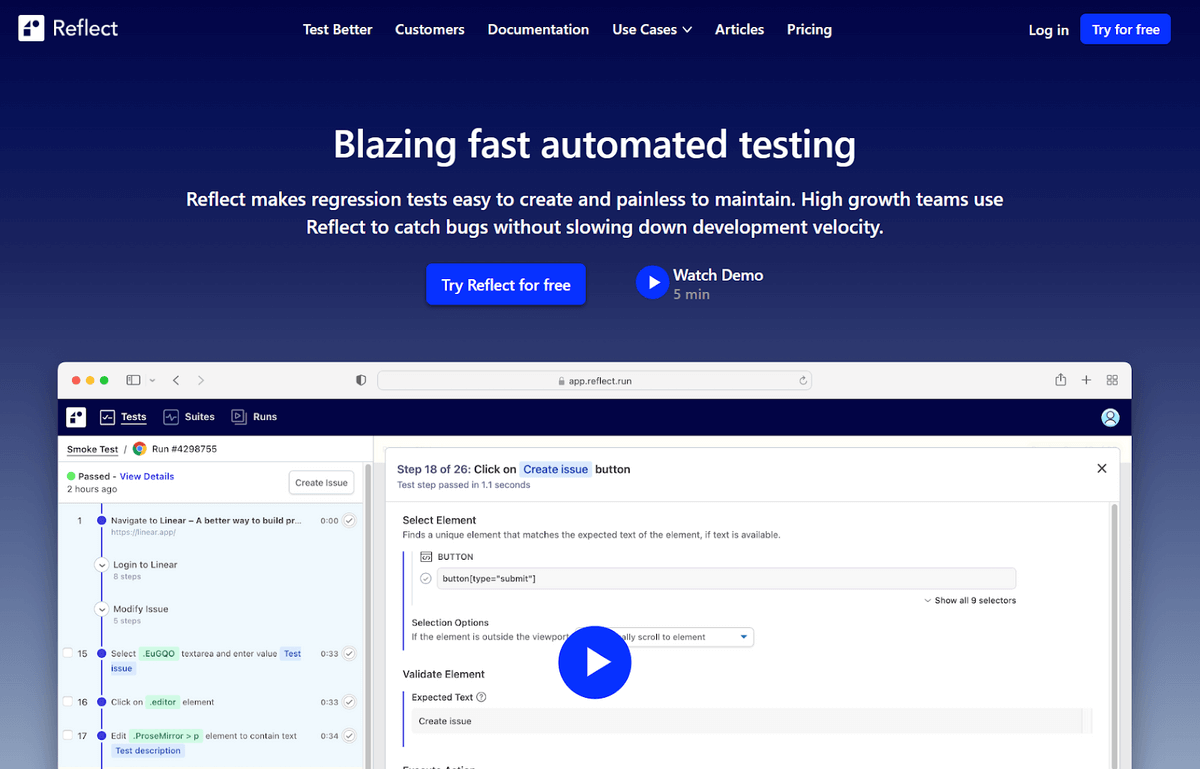
Reflect is a codeless automation testing tool that allows software testers to create automated tests without coding. Reflect uses natural language processing and machine learning to understand user interactions with the application under test and then generate test cases accordingly. The tool integrates with popular CI/CD tools and issue trackers, making it easy to incorporate into existing workflows.
Core Features:
- Allows testers to create automated tests without the need for coding, reducing the time and effort required to create and maintain tests.
- With Reflect, testers can easily create and execute many tests across multiple browsers and devices, improving test coverage and identifying issues early in the development cycle.
- Integrates with popular CI/CD tools, allowing testers to run tests automatically as part of the build process and get feedback quickly, reducing the time to identify and fix issues.
- Provides a web-based interface that makes it easy for team members to collaborate on test creation and execution, ensuring everyone has visibility into the testing process.
31. RainForest
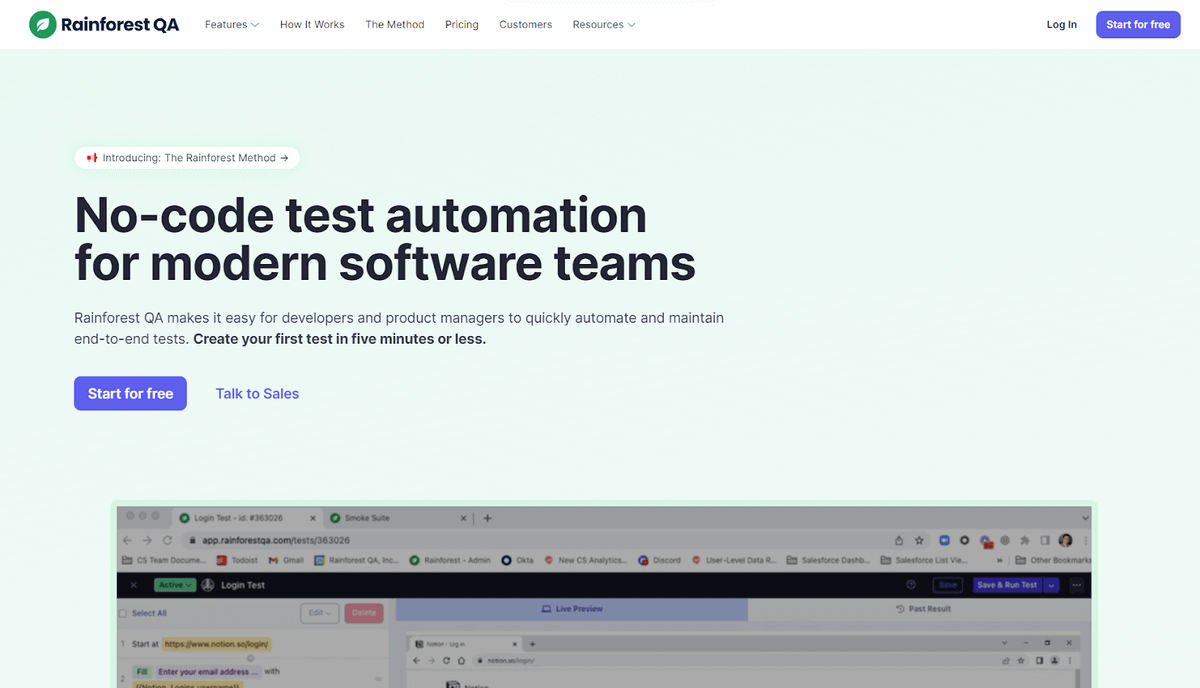
Rainforest is a cloud-based codeless testing tool that enables teams to create, manage, and execute tests without writing a single line of code. It uses AI-driven testing to identify and prioritize tests so that teams can focus on the most important ones first. With Rainforest, users can create tests using natural language, making it accessible for those who are not proficient in programming. Tests can also be easily maintained and updated through the tool’s visual interface.
Core Features:
- Allows teams to create and execute tests without needing programming skills.
- Prioritizes tests based on the likelihood of defects and coverage.
- Provides results in minutes, allowing teams to address issues quickly.
- Tests can be easily updated and maintained through the tool’s visual interface.
- Integrates with popular tools like Jira and Slack, making it easy to incorporate into existing workflows.
32. QMetry
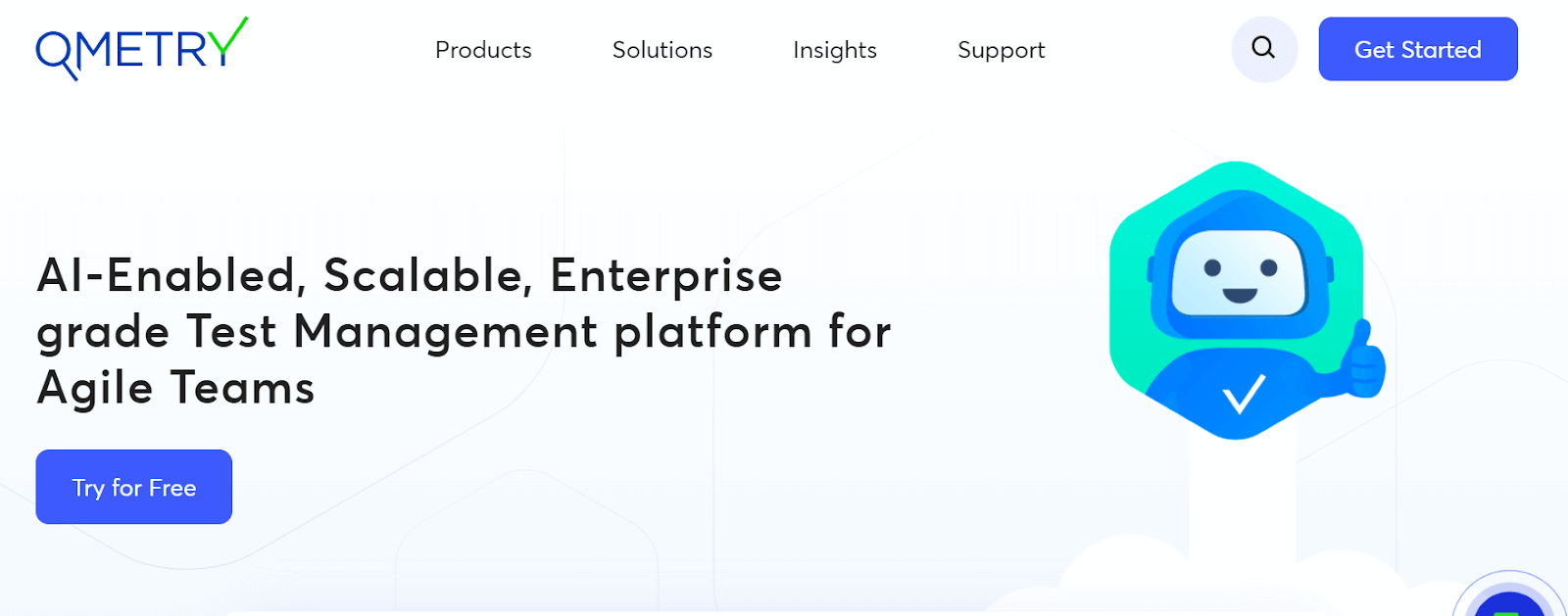
QMetry is one of the popular codeless testing tools specifically for DevOps and Agile testing teams. It provides a user-friendly interface that enables teams to effortlessly create and execute test scenarios across various platforms. With QMetry, preparing and running tests becomes a streamlined process.
One of the key features of QMetry is its ability to record test cases. Users can easily record their interactions with the application under test, capturing their actions and generating test scripts automatically. This feature simplifies the creation of test cases and eliminates the need for manual scripting.
Core Features:
- Provides comprehensive test management capabilities, allowing teams to efficiently plan, organize, and track their testing activities.
- Allows users to establish traceability between test cases and requirements, ensuring that all necessary functionality is tested and validated.
- Includes robust defect management functionality, enabling teams to track and prioritize defects discovered during testing.
- Supports test execution across different platforms, browsers, and devices.
- Integrates with various development and testing tools, allowing seamless collaboration and data exchange. It offers integrations with popular tools such as Jira, Jenkins, Git, and more, enabling teams to leverage their existing toolchains.
33. Oxygen
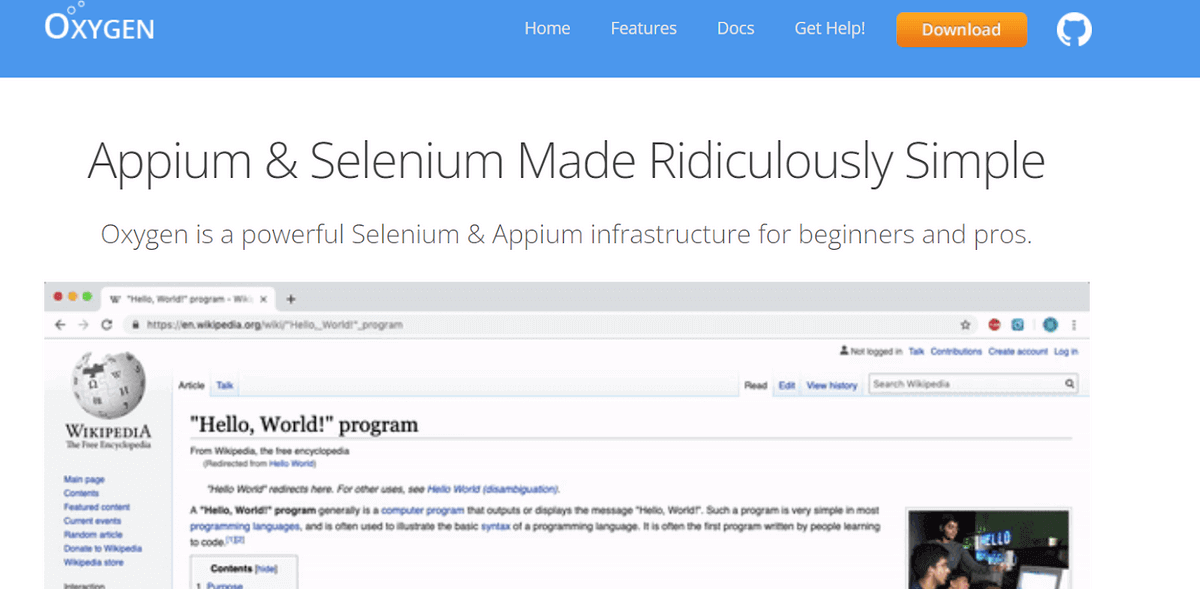
Oxygеn is a codеlеss tеsting tool that еnablеs usеrs to crеatе and еxеcutе tеsts without thе nееd for manual coding. It offеrs a visual and intuitivе intеrfacе that allows tеstеrs to dеsign tеsts using drag-and-drop actions, prе-dеfinеd componеnts, and configurablе options.
With Oxygеn’s codеlеss approach, usеrs can crеatе automatеd tеsts by intеracting with thе application undеr tеst (AUT) dirеctly within thе tool’s intеrfacе. This еliminatеs thе nееd for writing tеst scripts in programming languagеs and rеducеs thе barriеr to еntry for individuals with limitеd coding еxpеriеncе.
Oxygеn providеs a widе rangе of functionalitiеs to support codеlеss tеsting, including tеst casе managеmеnt, tеst data managеmеnt, tеst еxеcution, rеsult analysis, and rеporting. It offеrs a variеty of built-in actions and controls to simulatе usеr intеractions, validatе еxpеctеd rеsults, handlе data, and pеrform complеx tеst scеnarios.
Core features:
- Enablеs usеrs to crеatе and еxеcutе tеsts without manual coding. Its intuitivе, visual intеrfacе allows for tеst crеation through drag-and-drop actions, prе-dеfinеd componеnts, and configurablе options.
- Providеs a cеntralizеd rеpository for managing tеst casеs. Usеrs can organizе, catеgorizе, and vеrsion control thеir tеst casеs, making it еasiеr to maintain and rеusе thеm.
- Exеcutеs tеsts across diffеrеnt еnvironmеnts and configurations. It capturеs tеst еxеcution rеsults, logs, and scrееnshots, allowing you to analyzе thе outcomеs and idеntify any issuеs or failurеs.
- Offеrs capabilitiеs to managе tеst data еffеctivеly. You can input, gеnеratе, or import tеst data, еnsuring comprеhеnsivе covеragе and variеd scеnarios for tеsting.
- Gеnеratеs dеtailеd rеports that providе insights into tеst еxеcution rеsults, covеragе, and mеtrics. Thеsе rеports hеlp stakеholdеrs assеss thе ovеrall quality and progrеss of thе tеsting еfforts.
34. autoMagiQ
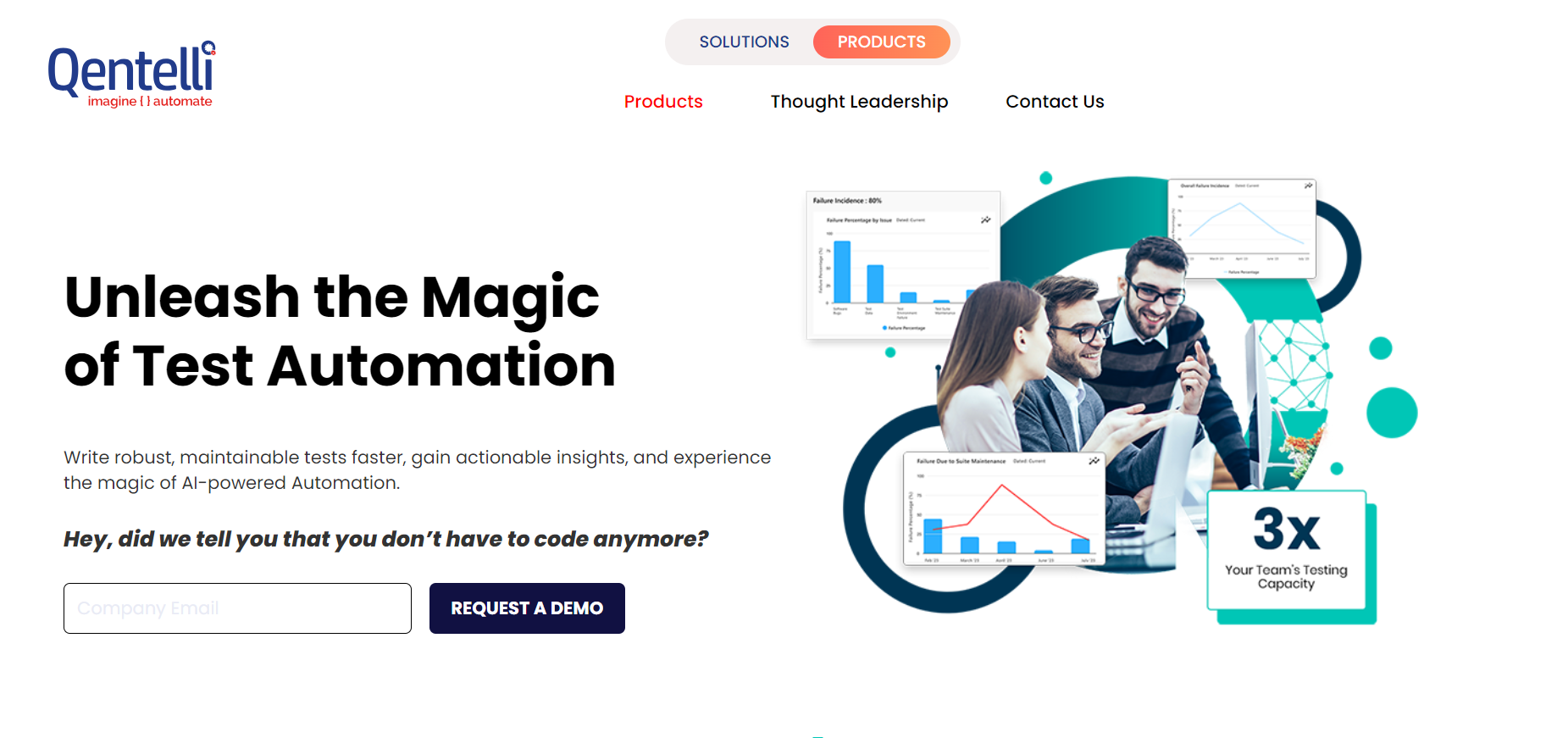
autoMagiQ is a cutting-edge, codeless test automation tool designed to empower modern continuous engineering teams in delivering exceptional digital experiences. Seamlessly integrating into your EngineeringOps ecosystem, autoMagiQ streamlines and automates your testing and validation processes.
Ideal for teams seeking to elevate software quality and customer experiences, autoMagiQ is user-friendly, scalable, reliable, and cost-effective compared to other market offerings. If you’re searching for a no-code automation platform to enhance your digital experiences, look no further than autoMagiQ.
Core Features:
- Perform end-to-end tests effortlessly, covering UI, API, and database functionalities.
- Utilize the built-in real device lab for testing.
- Efficiently create and organize test cases and data in a central repository.
- Execute tests on multiple browsers and devices, and receive comprehensive reports on test outcomes.
- Seamlessly integrate with CI/CD pipelines for automated deployments.
- Enhance development and release cycles, and reduce time spent on manual testing.
Why should you opt for Codeless Automated Testing?
Codeless automated testing has several benefits that make it a compelling option for software testing. First and foremost, it is much faster and more efficient than traditional manual testing methods. Codeless automation testing tools allow testers to quickly create and run test cases without requiring programming knowledge or expertise. Another advantage of codeless testing is that it can reduce the risk of human error. Automated tests are less prone to mistakes and inconsistencies than manual tests, which can lead to more accurate and reliable results.
Finally, codeless testing can be more cost-effective in the long run. While there may be an initial investment in acquiring and learning how to use a codeless testing tool, the time and money saved by automating testing processes can outweigh the initial costs.
How can QA Teams utilize Codeless Test Automation?
QA teams can utilize codeless test automation in several ways to improve the quality and efficiency of their testing processes. Firstly, they can use codeless testing tools to create automated test cases quickly and easily without the need for programming expertise. This can help to speed up the testing process and reduce the workload for testers.
Secondly, codeless testing tools can help QA teams identify and resolve issues more quickly by running tests automatically and providing detailed reports on failures or errors. This can help to reduce the time and effort required to troubleshoot and fix problems.
Finally, codeless testing tools can help QA teams to improve the accuracy and reliability of their testing processes. Automated tests are less prone to human error than manual tests, which can help to ensure that software products are thoroughly tested and of high quality.
Thankfully, LambdaTest, a unified digital experience testing platform, provides an online device farm of over 3000+ real devices and operating systems to perform automation testing at scale and comes with codeless test automation integration capabilities, which makes testing a breeze. Its integration with popular codeless testing tools like Katalon Studio, Ranorex, and QMetry allows for seamless testing experiences. Learn more about these integrations on the LambdaTest Integrations page.
Subscribe to our LambdaTest YouTube Channel to get the latest updates on tutorials around Selenium testing, Cypress testing, and more.
Step 1: To begin, you must first sign up and log in to your LambdaTest account.
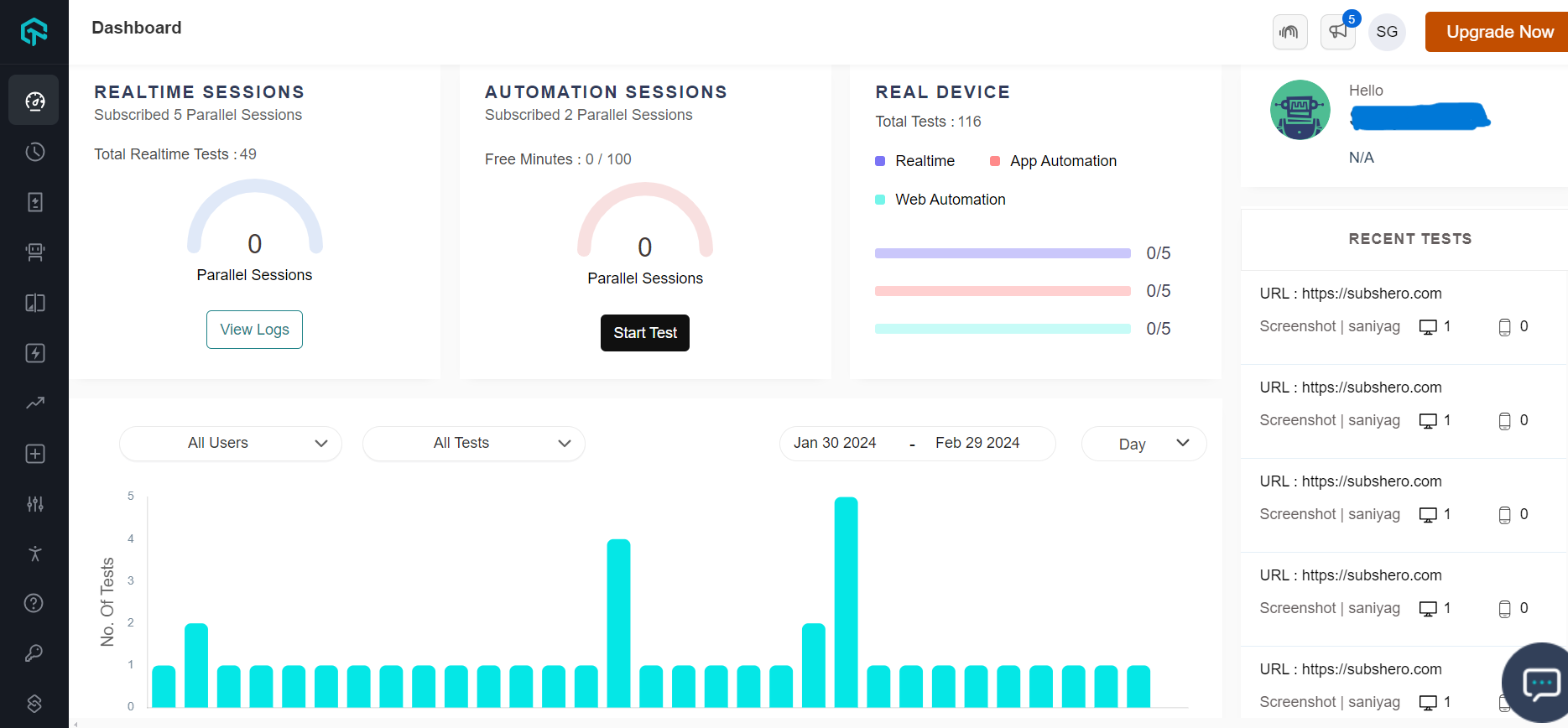
Step 2: Select the Integrations option from the left panel.
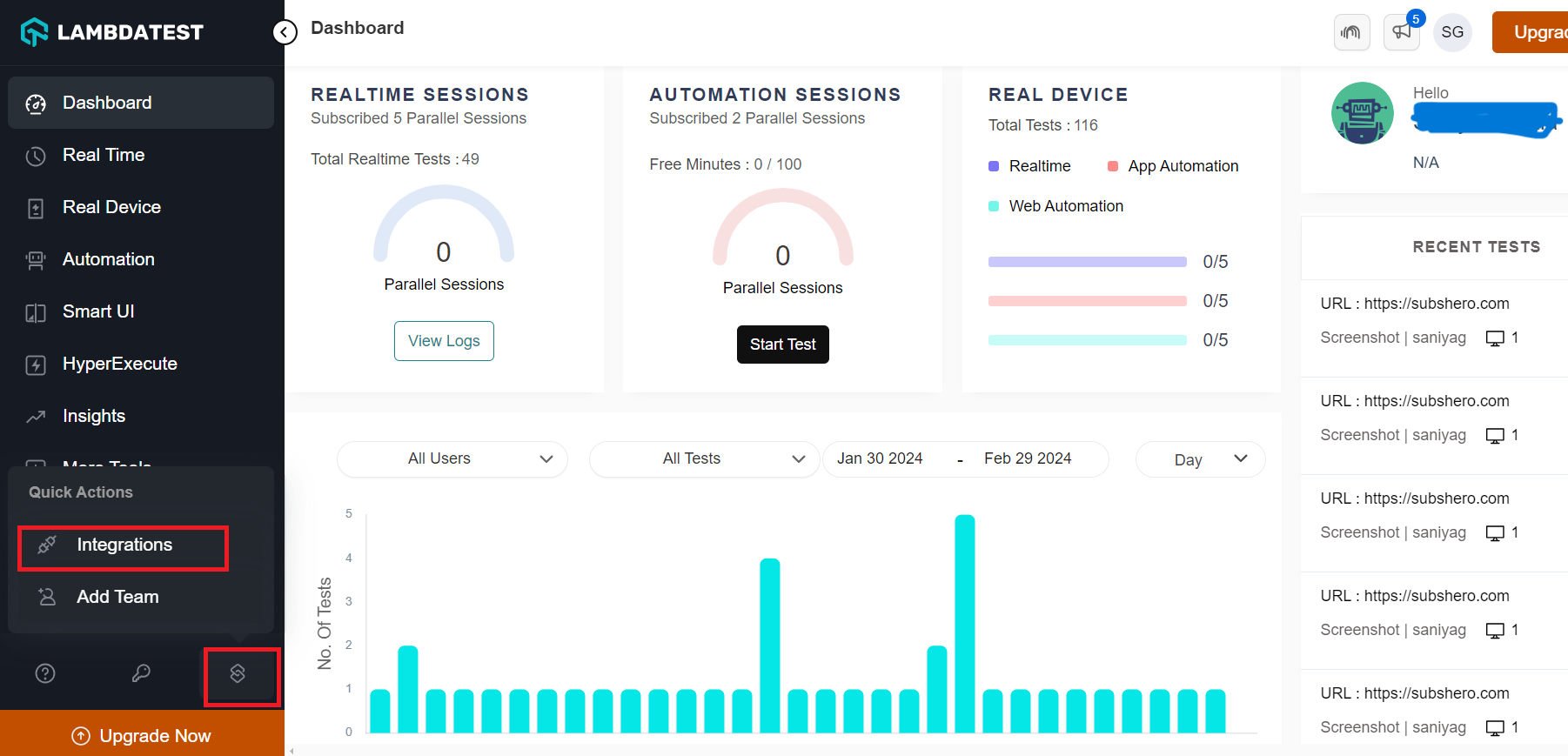
Step 3: A variety of codeless automation tools will be displayed for you to choose from. Simply select the one that best suits your needs.
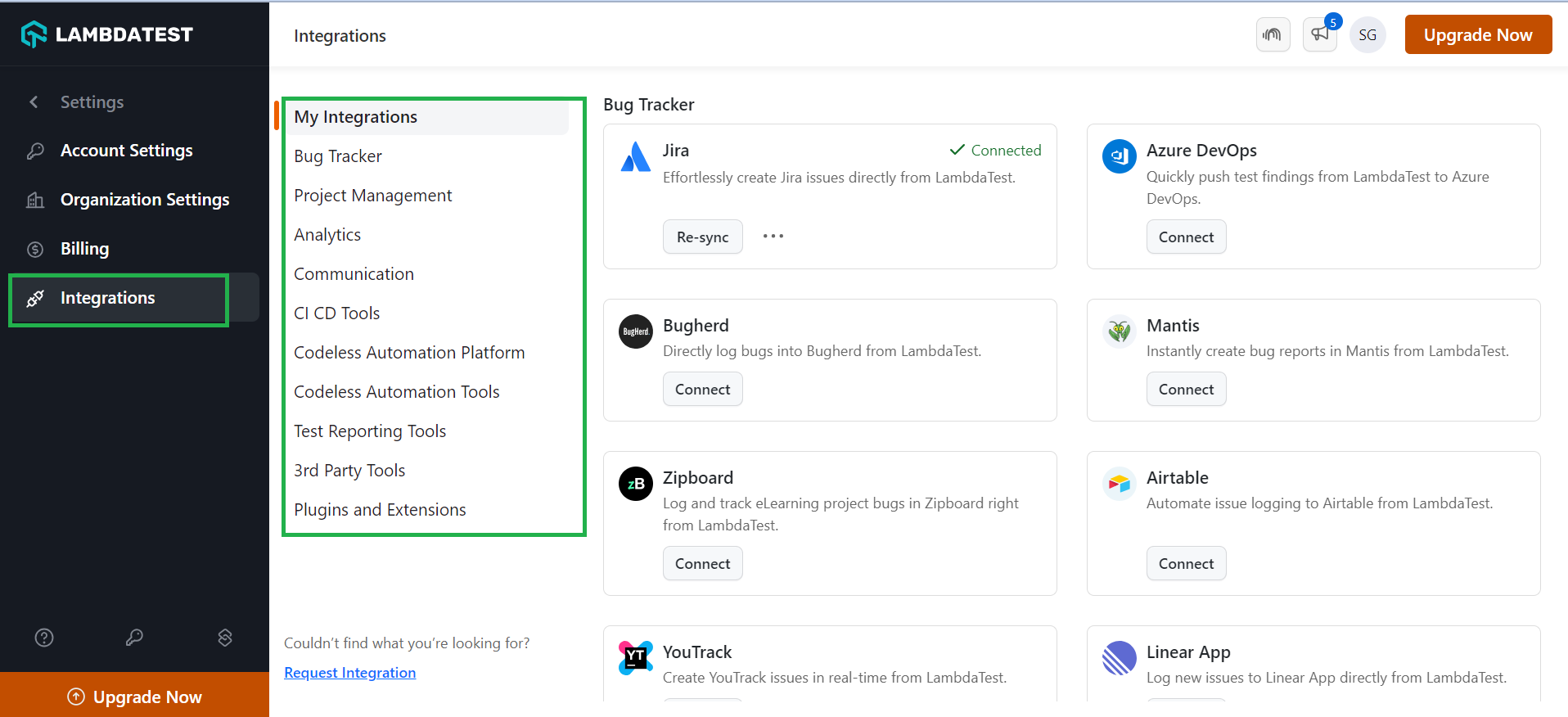
By clicking on a specific tool icon, you will find the necessary documentation for integrating codeless automation tools with LambdaTest. Simply follow the provided steps and complete your integration effortlessly!
Wrapping Up!
There is an overabundance of benefits of codeless testing tools that outweigh the negative aspects of automation testing. They eventually save significant expenses and time in coding functionalities and convey quality through favorable test coverage. However, these tools need more documentation, features, and modularity.
In summary, software testers prefer codeless test automation as a critical component in the Agile development procedure. It wouldn’t replace code-based testing completely but accelerate their work. It is still maturing with its unique advantages and requirements in 2024 and complements the picture’s whole automation tests. Check out our hub on test automation metrics to examine various metrics for measuring success, the strategies for metric implementation, and its challenges involed.
Also, read about the distinctions between Manual Testing v/s Automation Testing in this Comprehensive Guide.
Frequently Asked Questions (FAQs)
What are codeless automation test tools?
Codeless automation test tools are software programs that enable testers to create automated tests without writing code. These tools use graphical user interfaces (GUIs) to create automated tests through drag-and-drop functionality, making them easier to use and accessible to testers without programming experience.
Is Selenium codeless?
Selenium is not entirely codeless. While it has features that allow testers to create automated tests without writing code, it also has a programming interface that requires some coding knowledge.
Is Tosca codeless?
Tosca is a codeless testing tool that allows testers to create automated tests without writing code. It uses a visual modeling approach to define and execute test cases automatically.
Which testing does not need coding?
Exploratory testing, usability testing, and manual testing are types of testing that do not require coding.
Does Selenium need coding?
Selenium requires some coding knowledge to use its programming interface, but it also has features allowing testers to create automated tests without writing code.
Got Questions? Drop them on LambdaTest Community. Visit now





